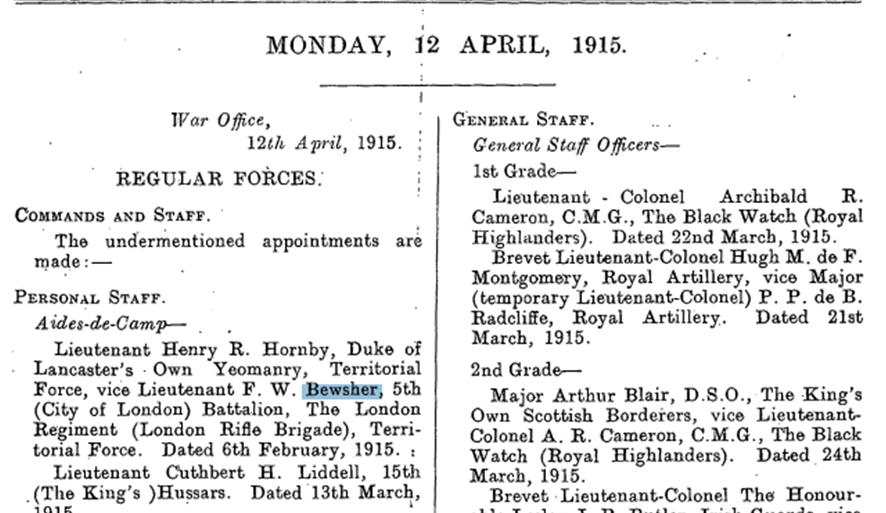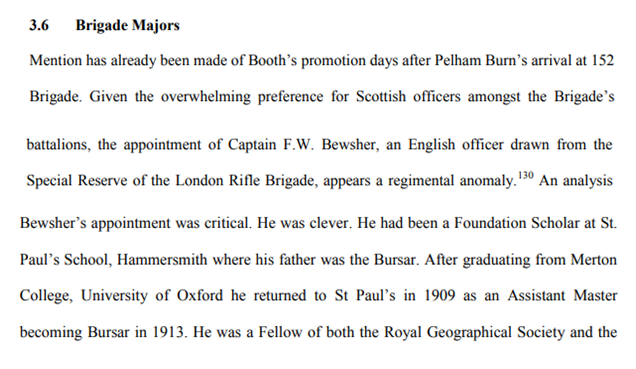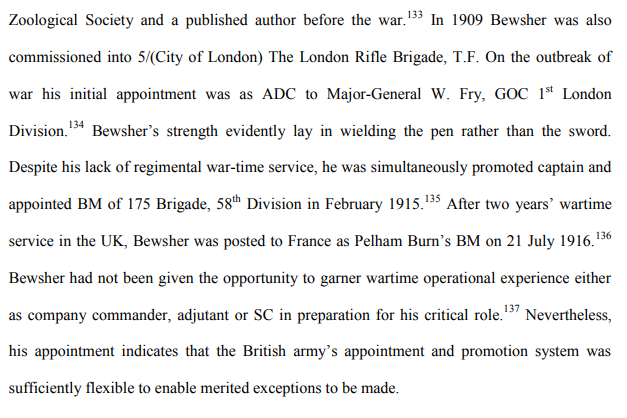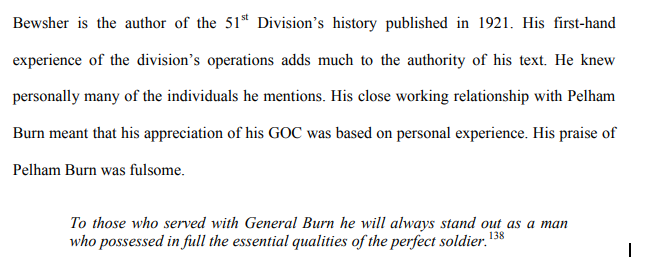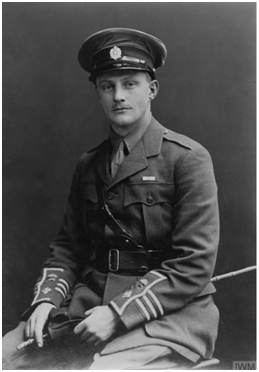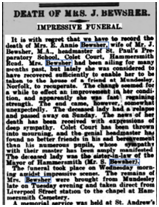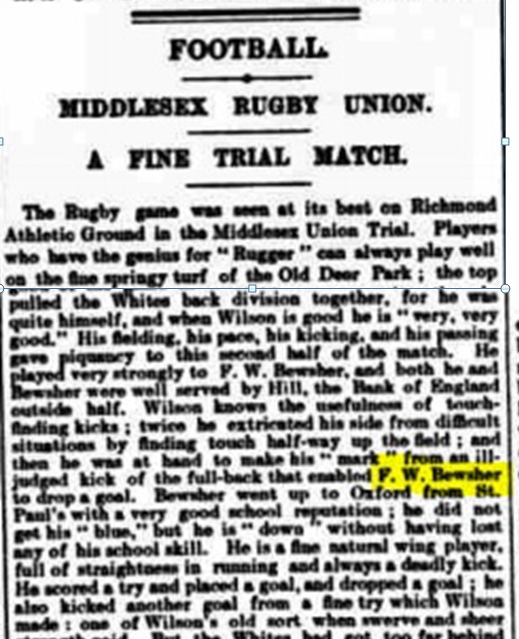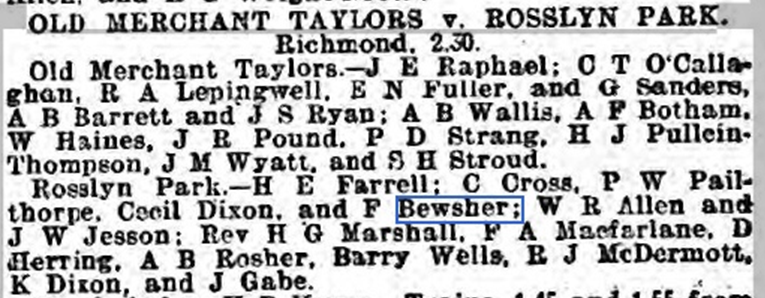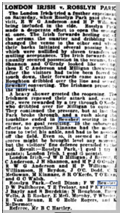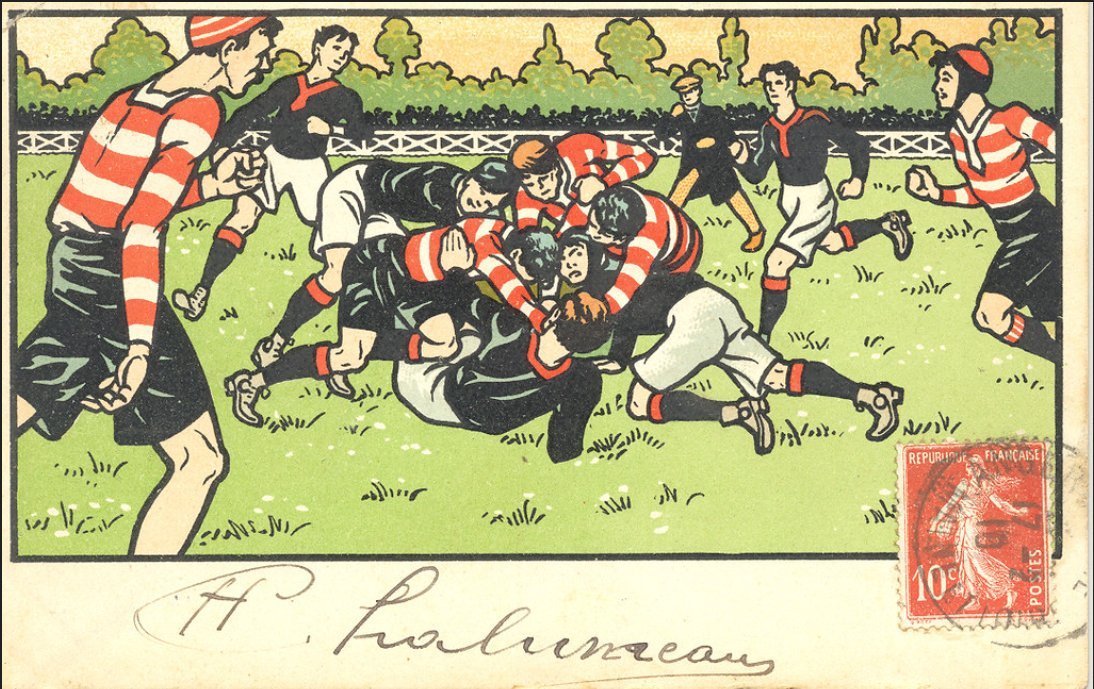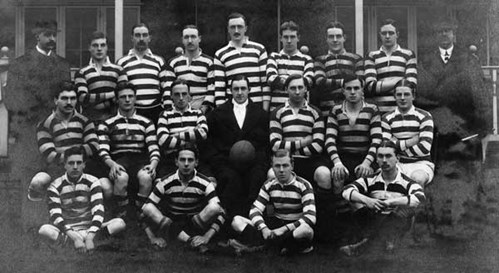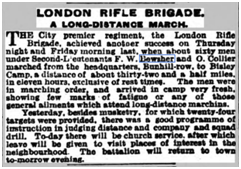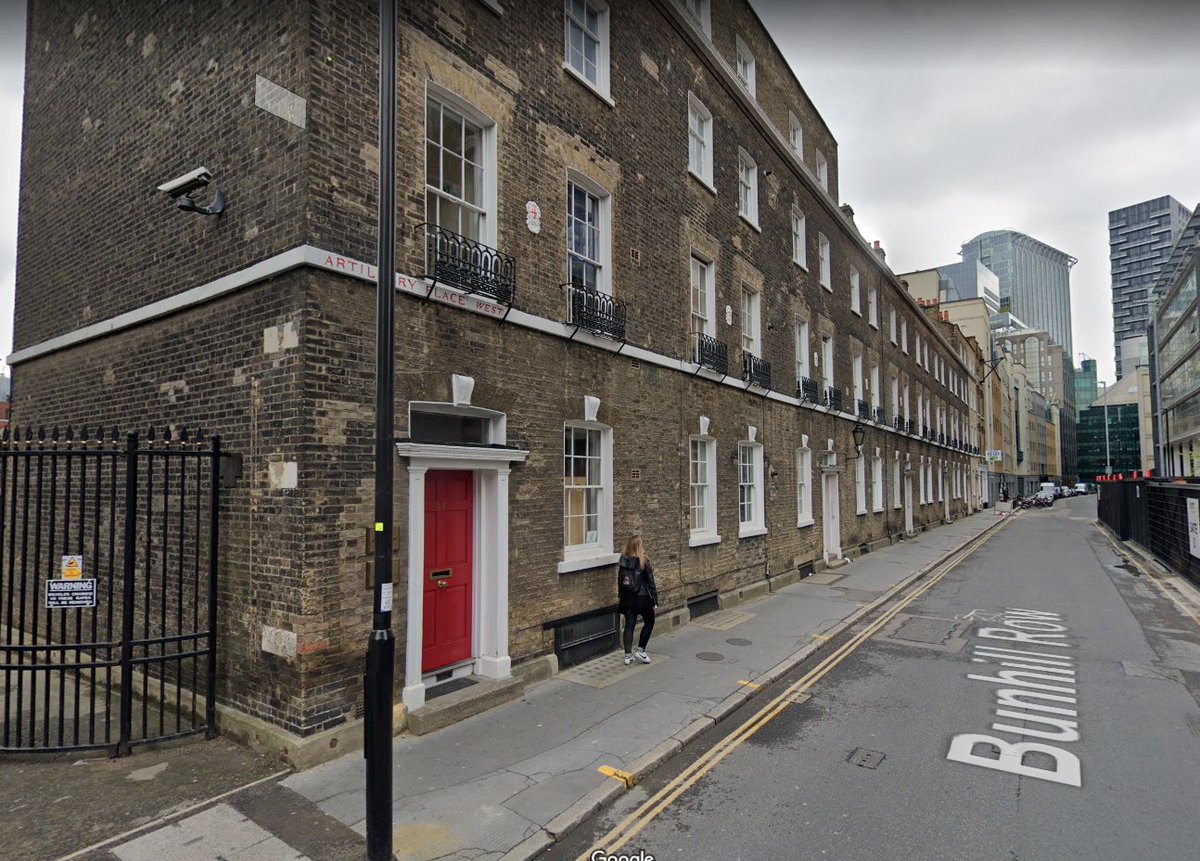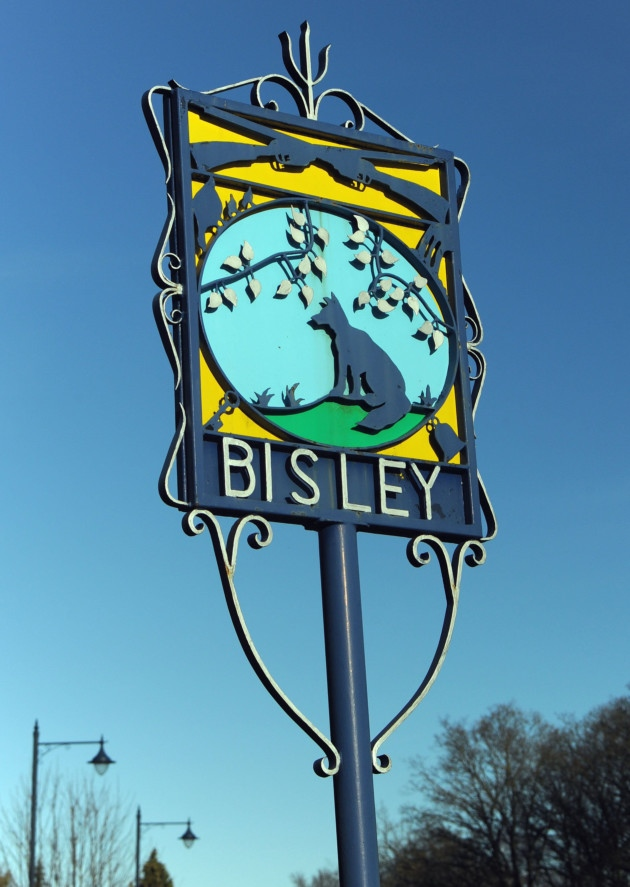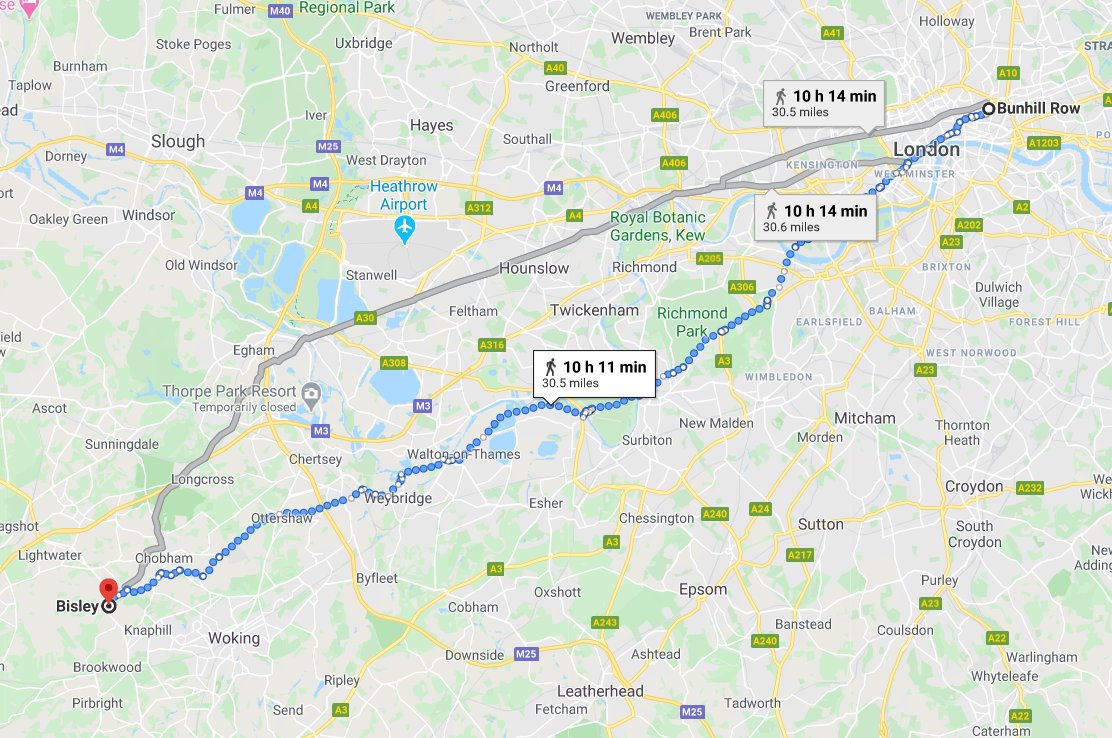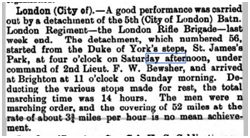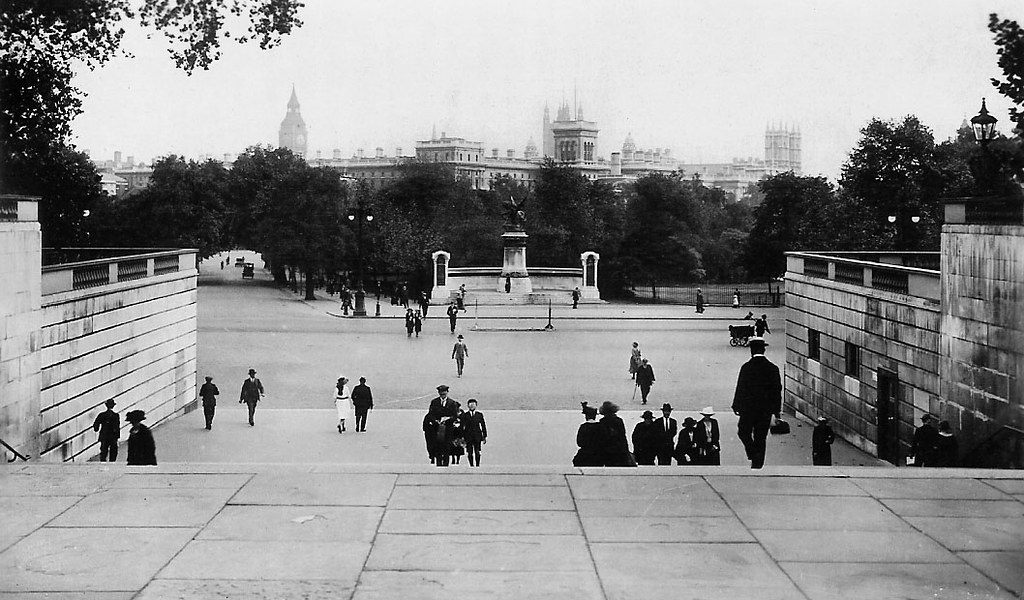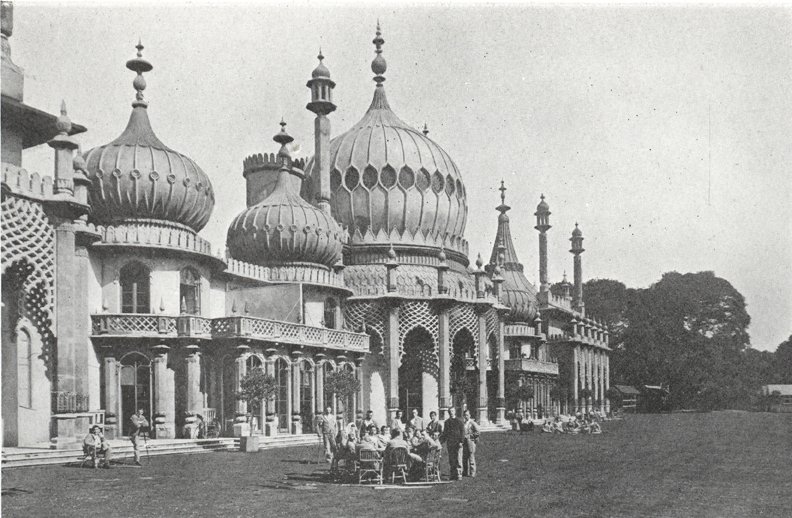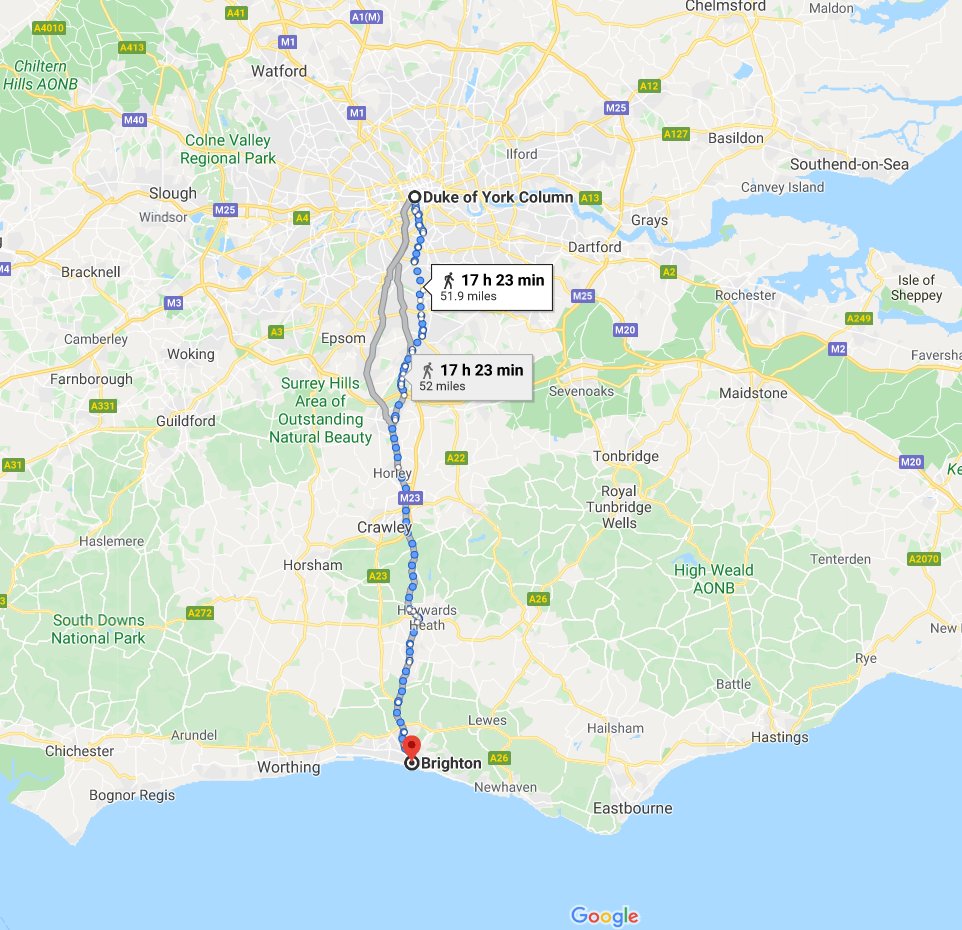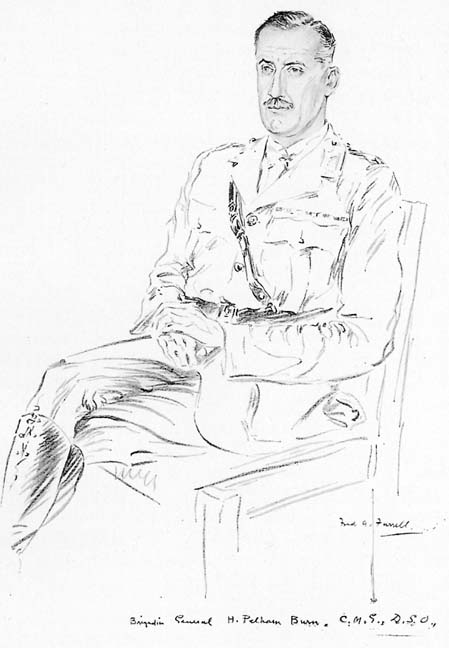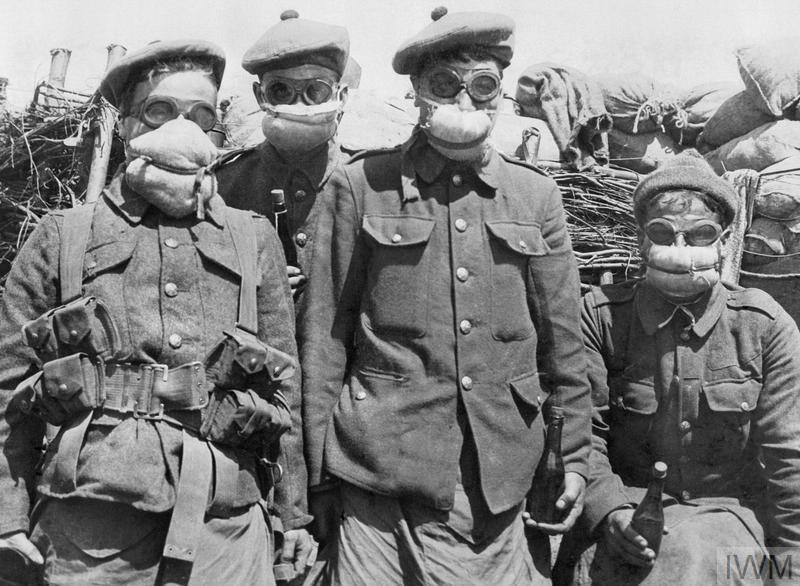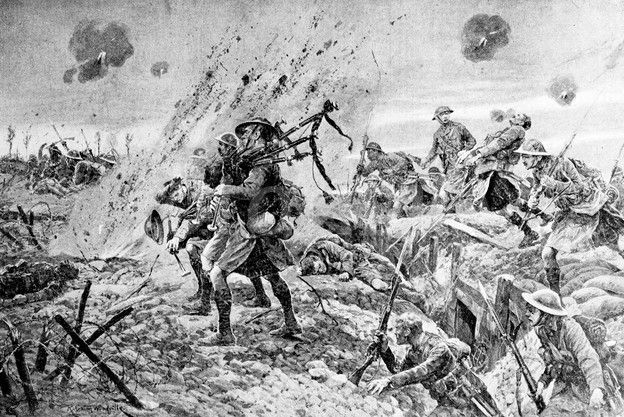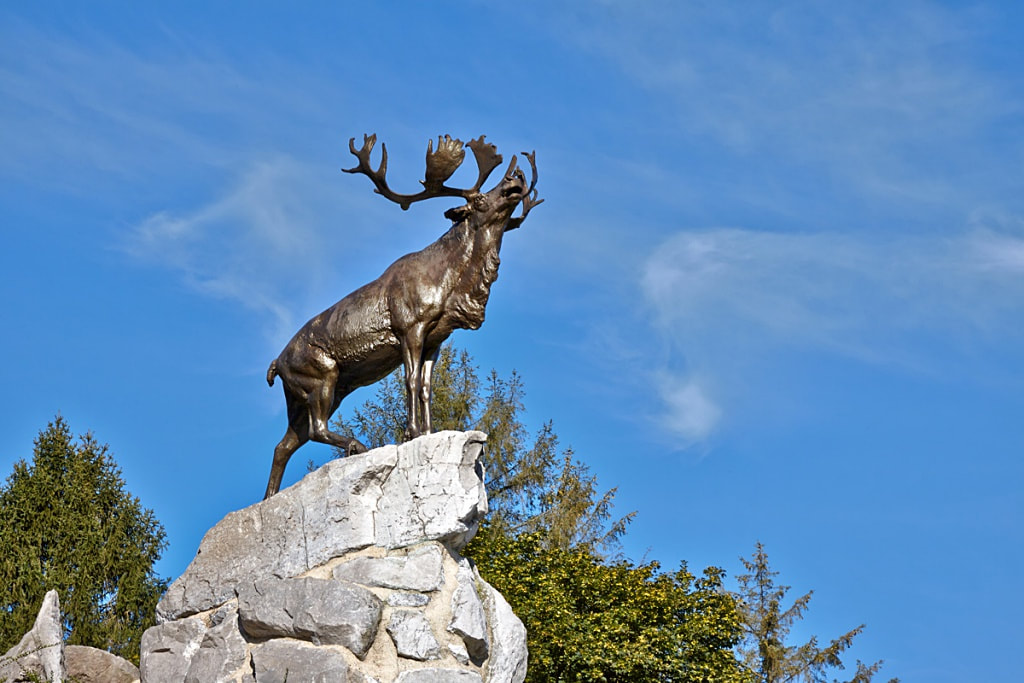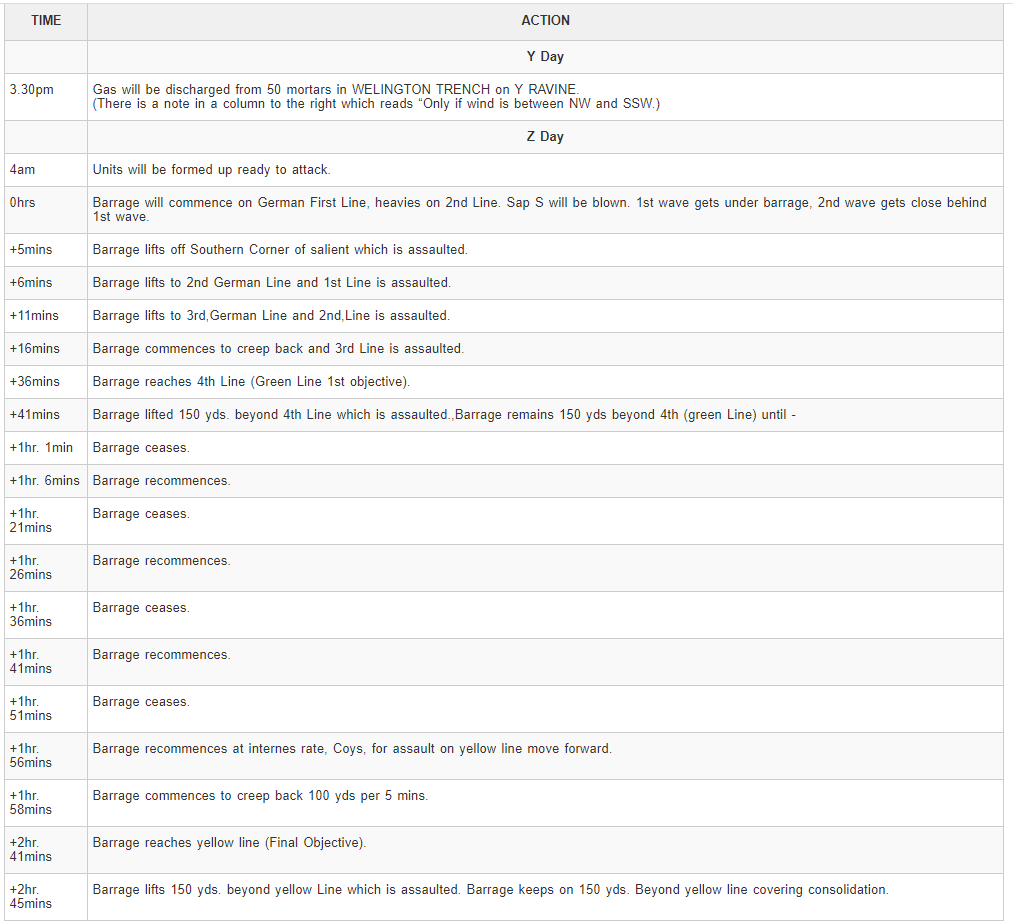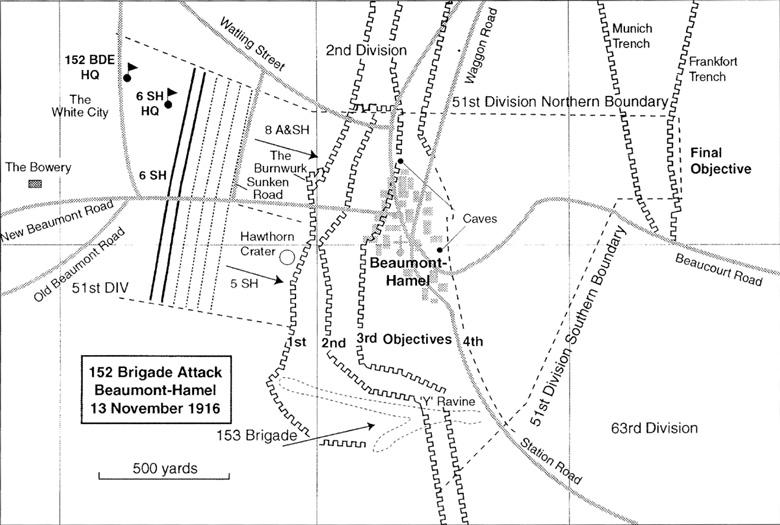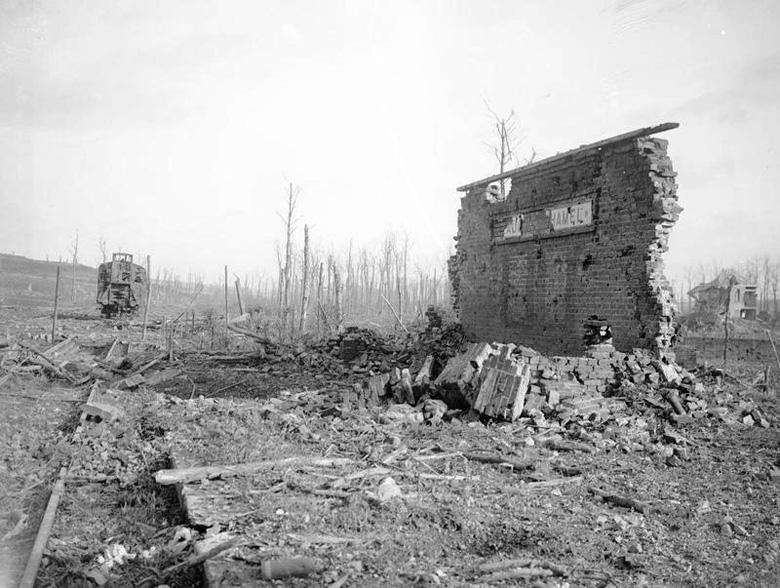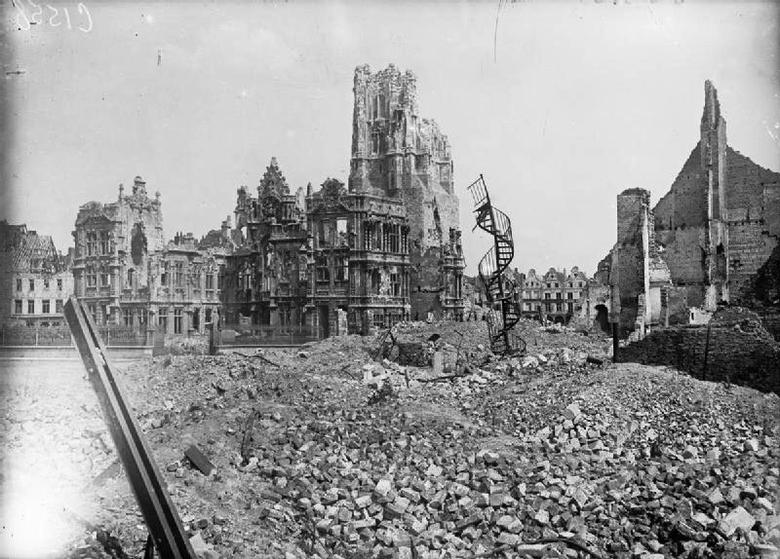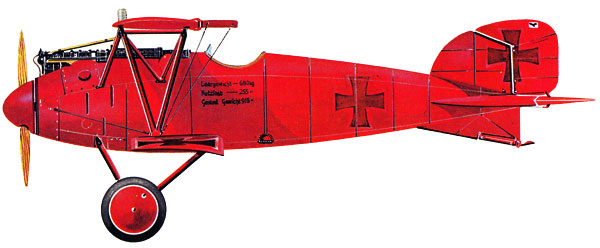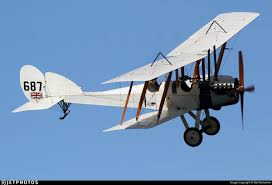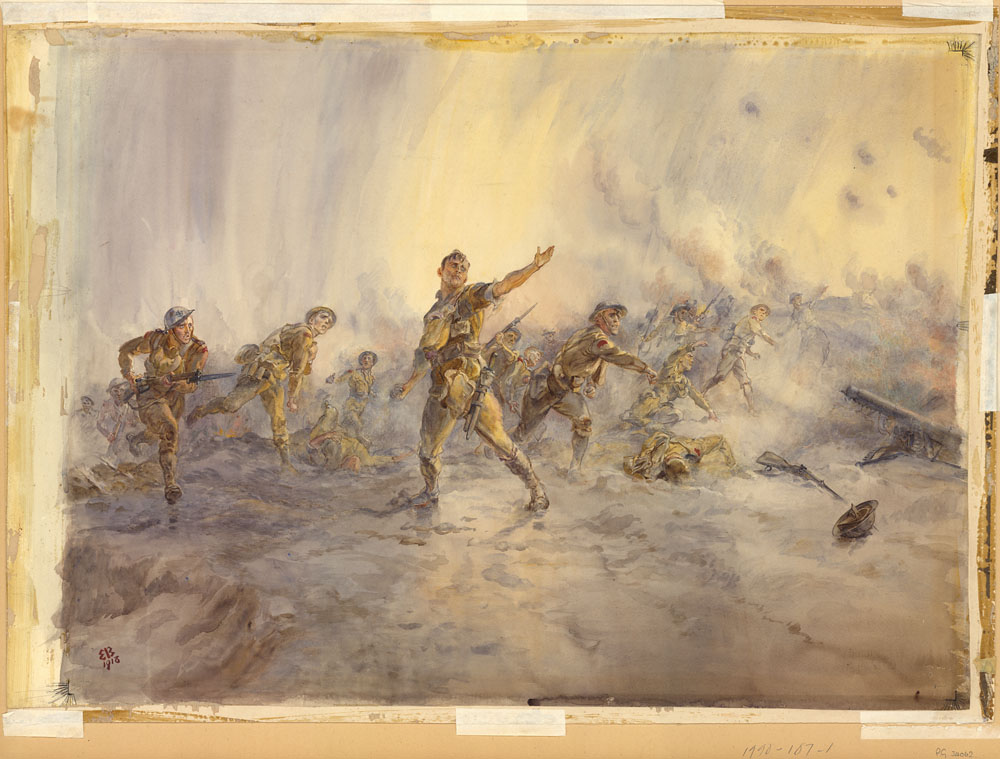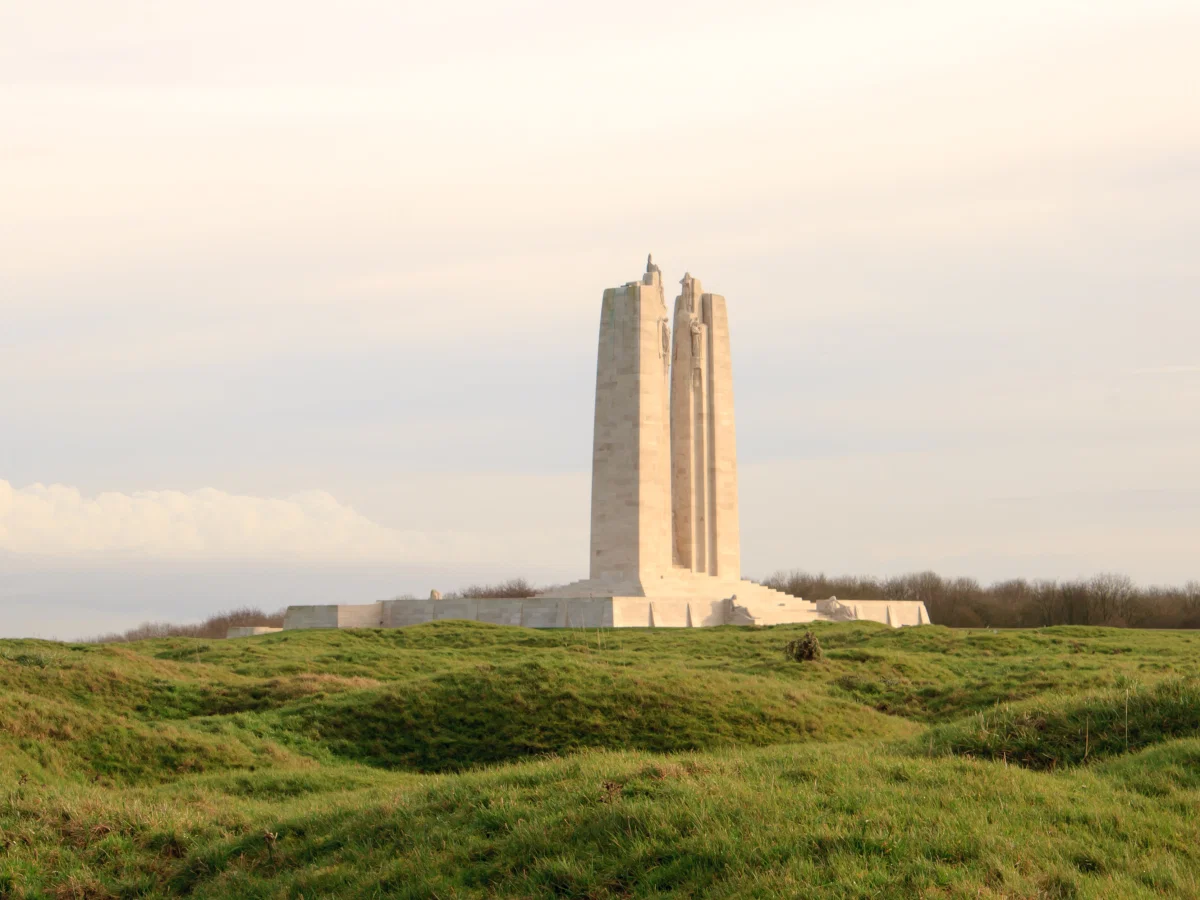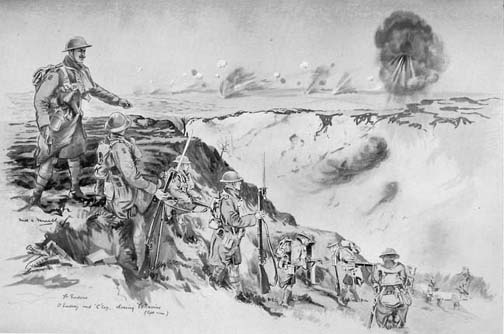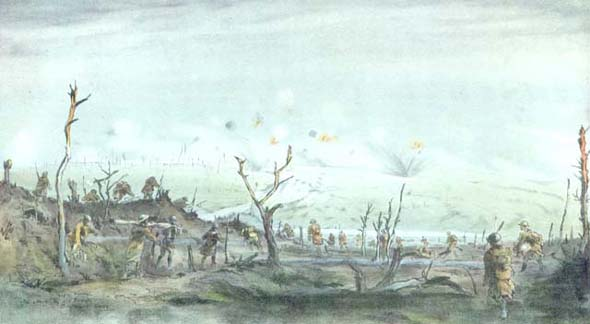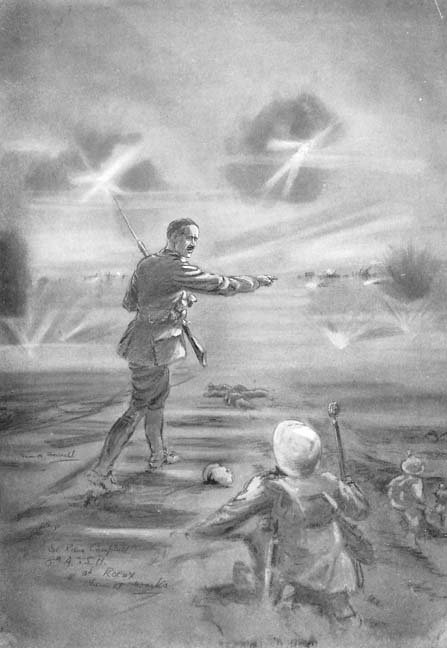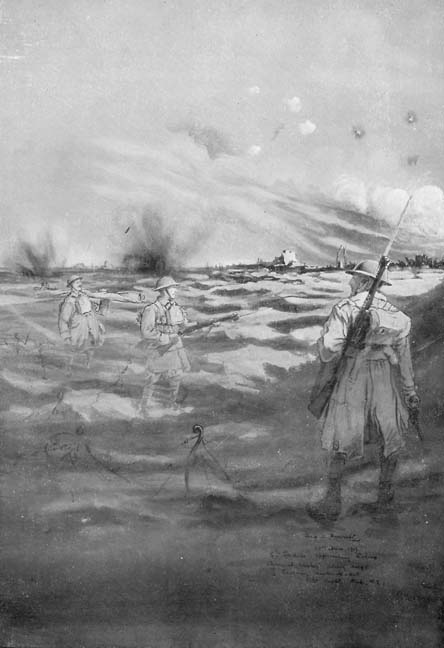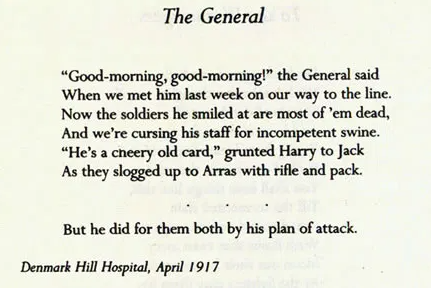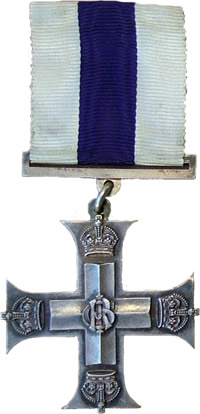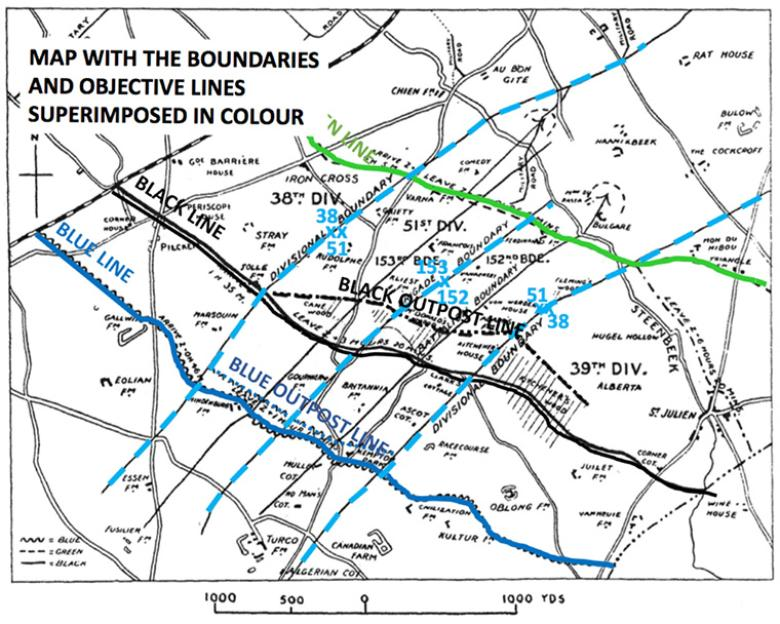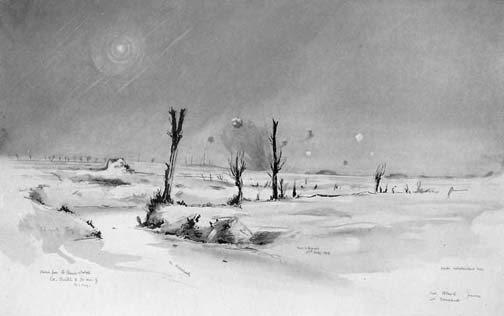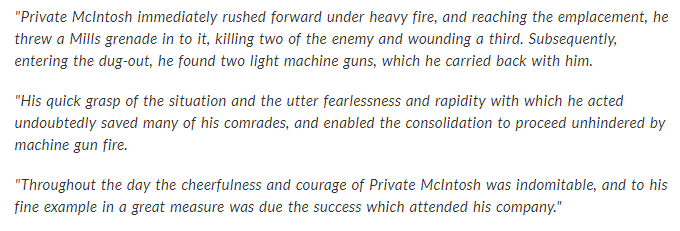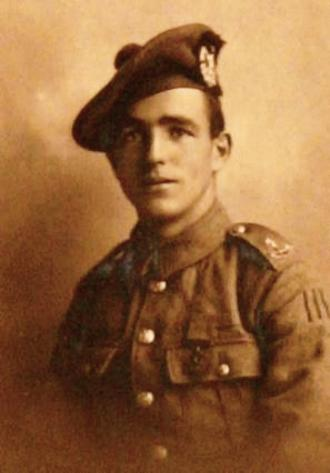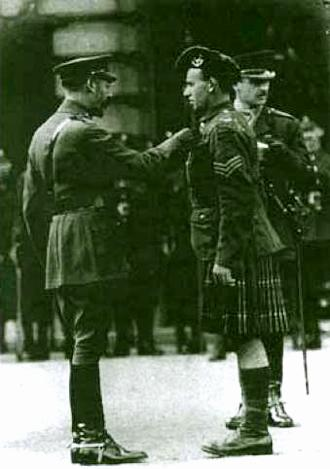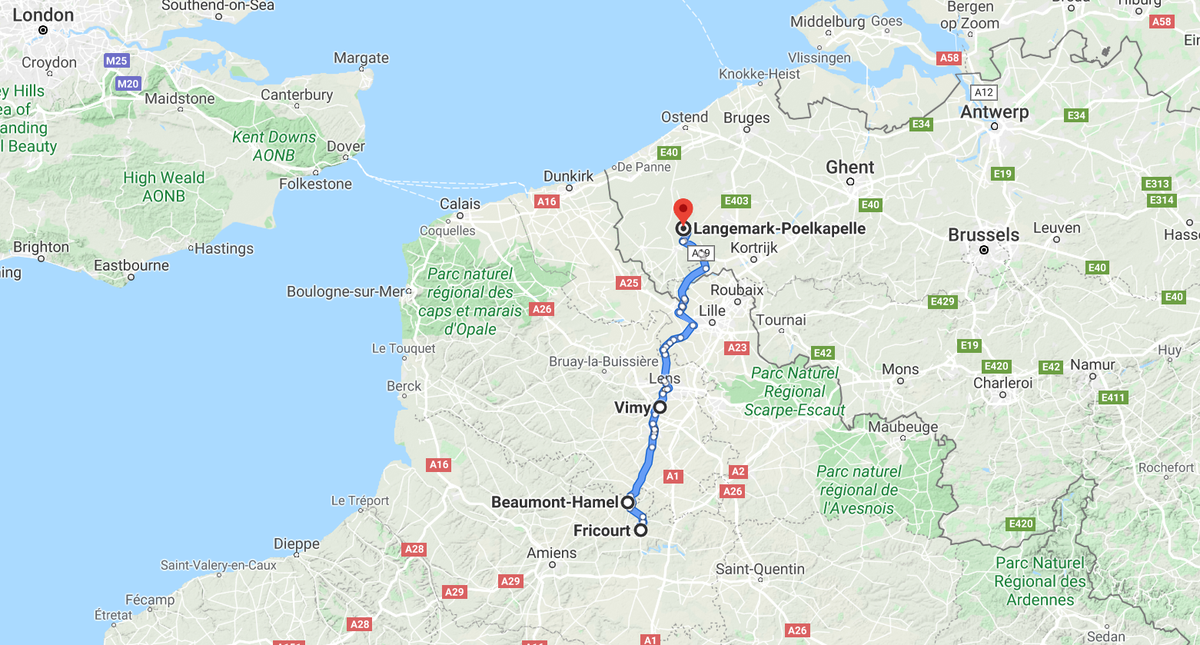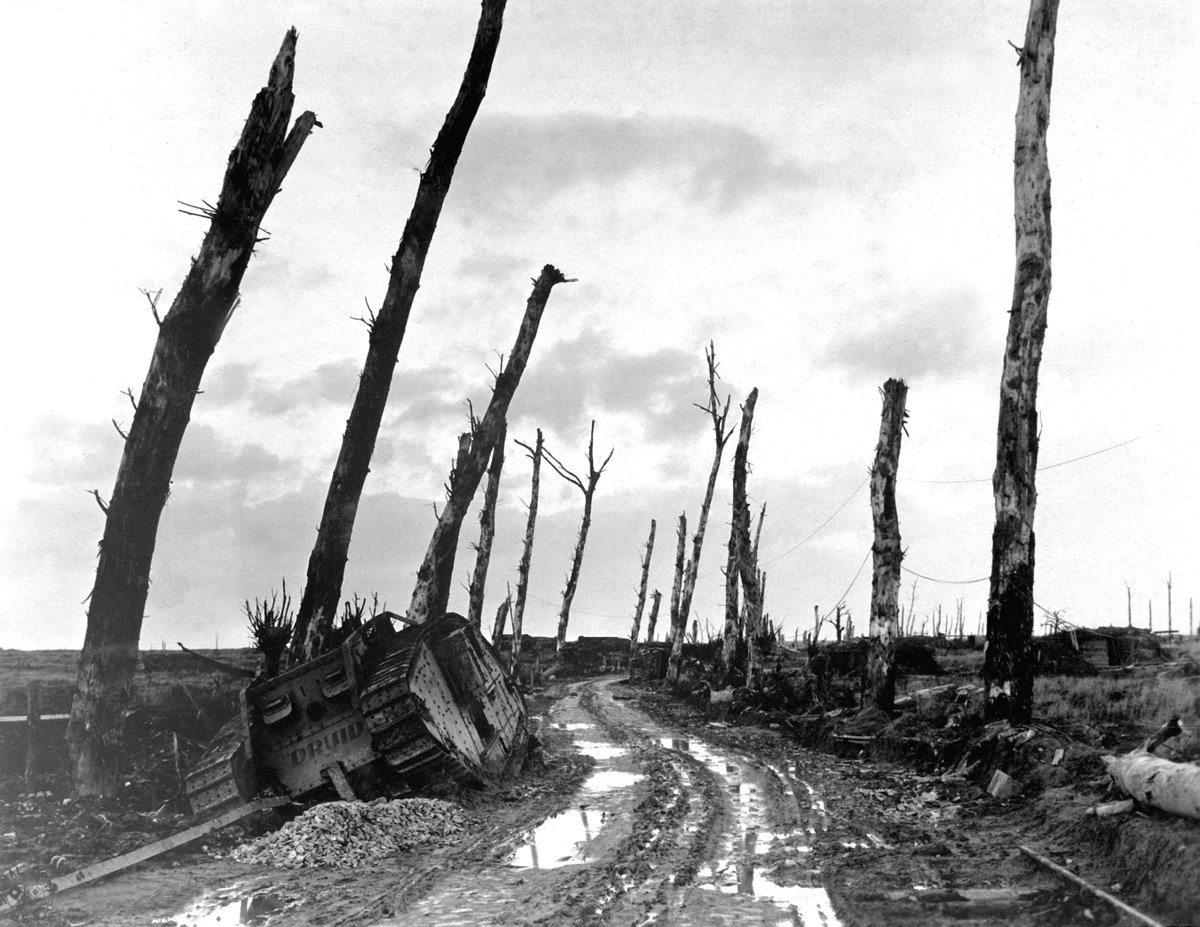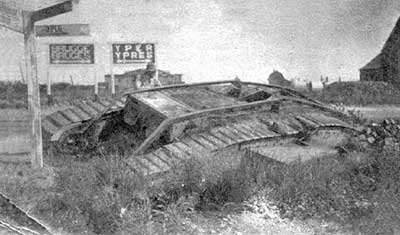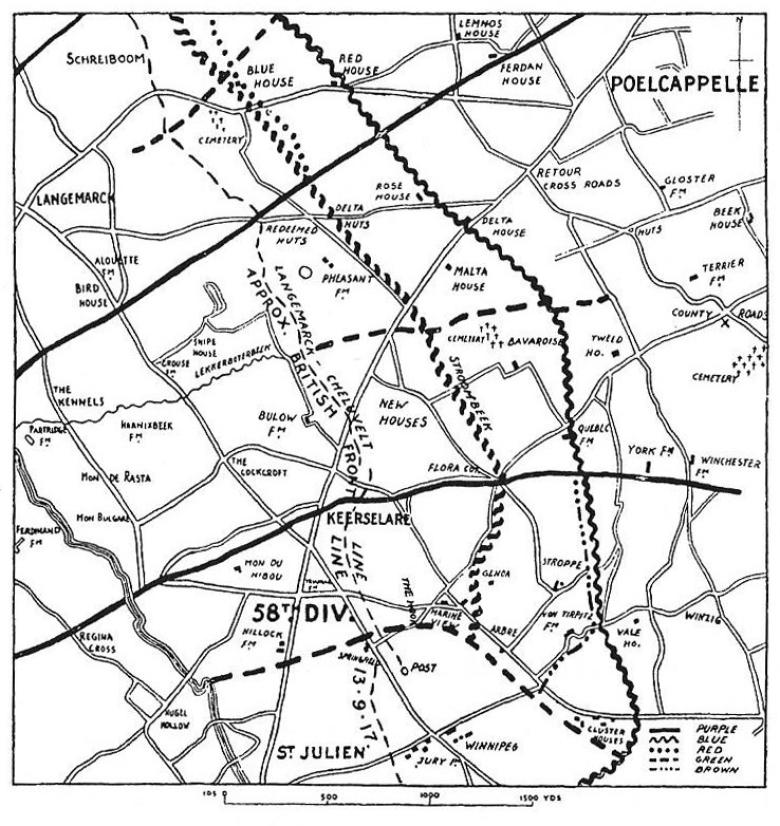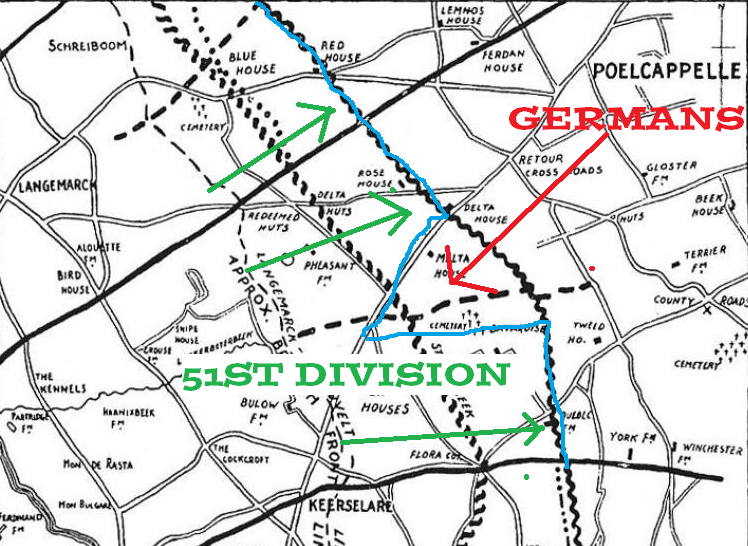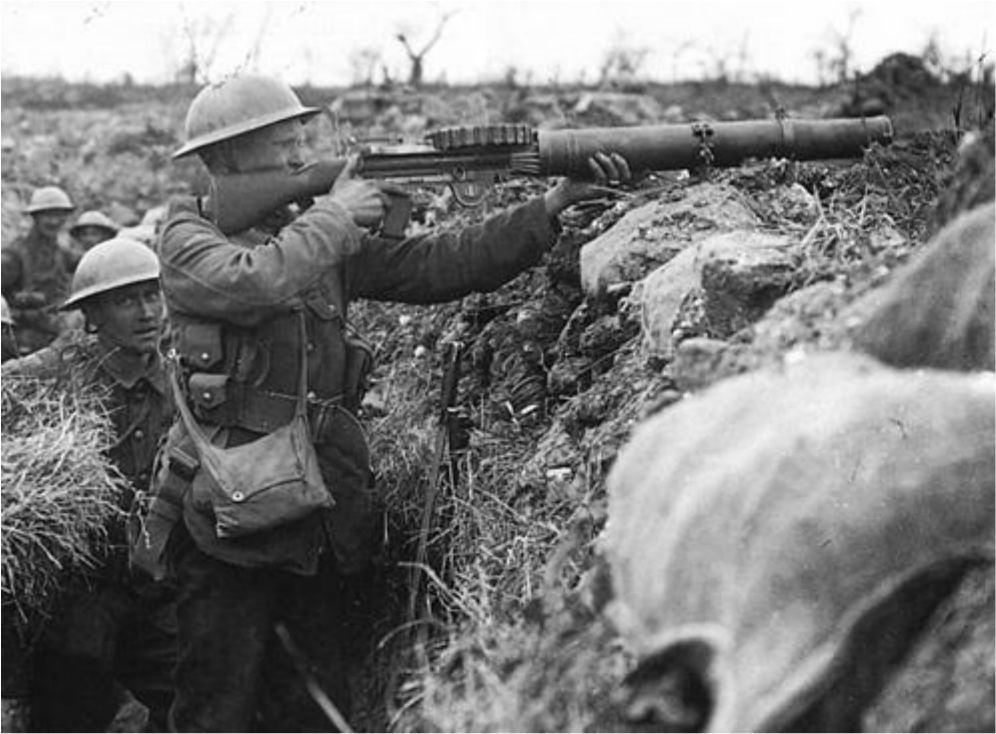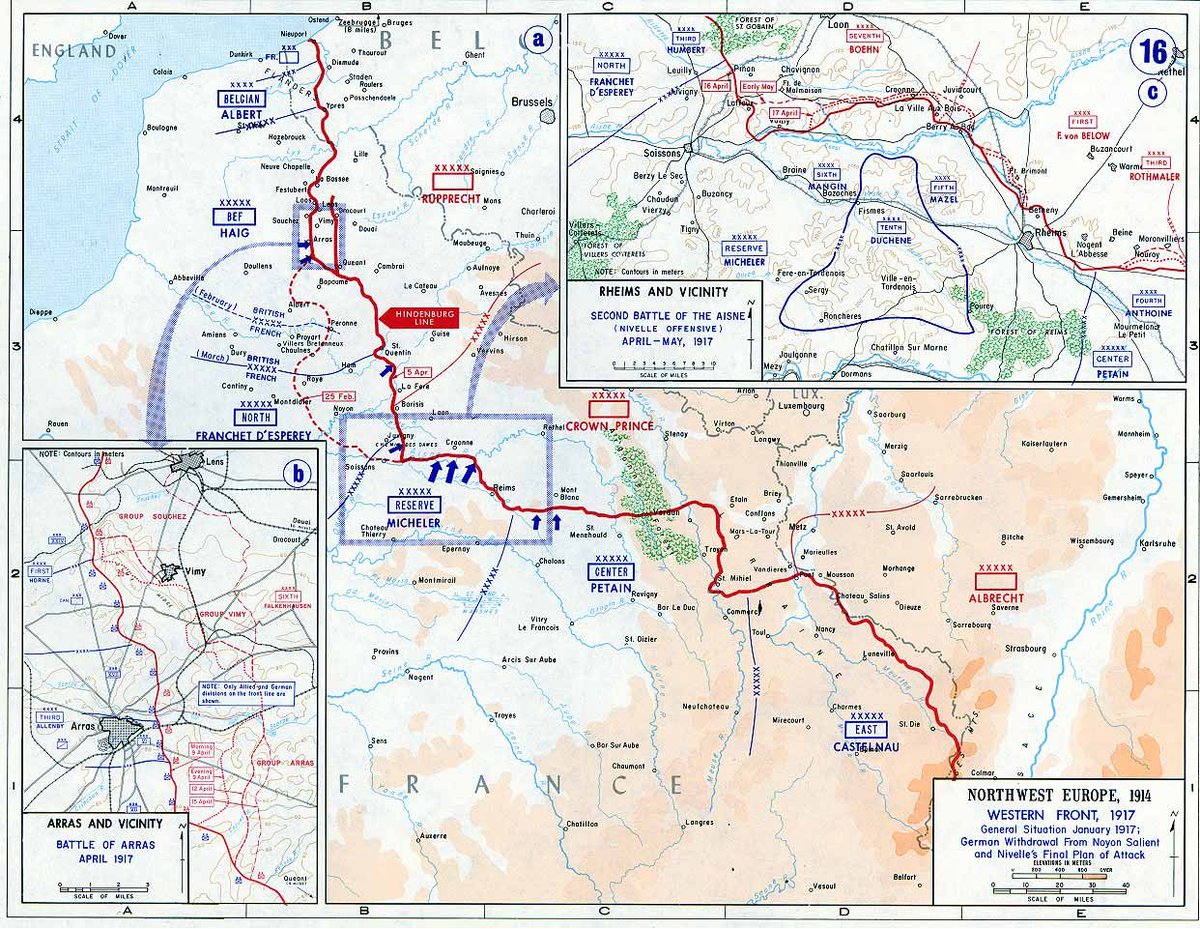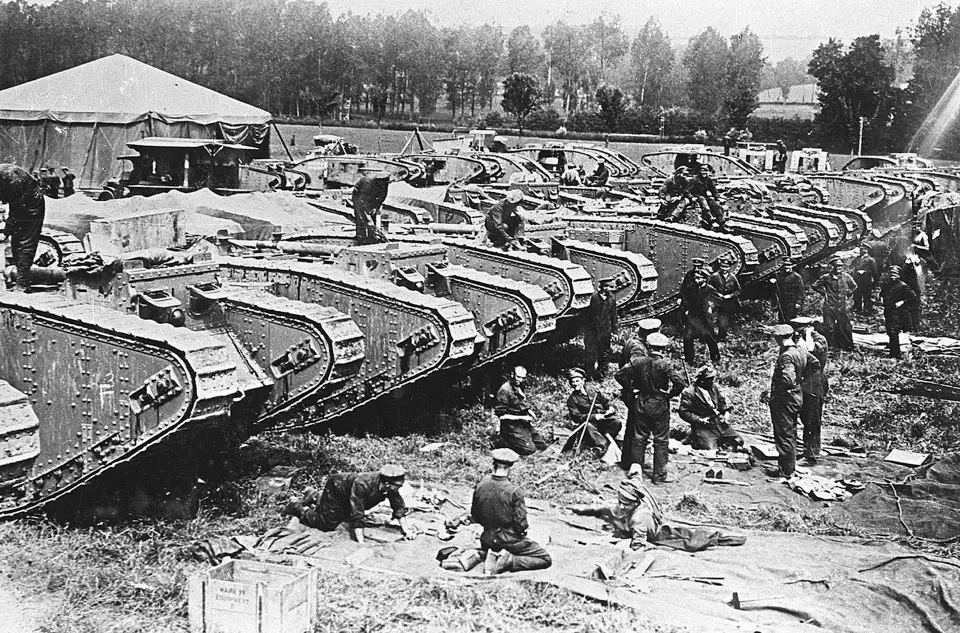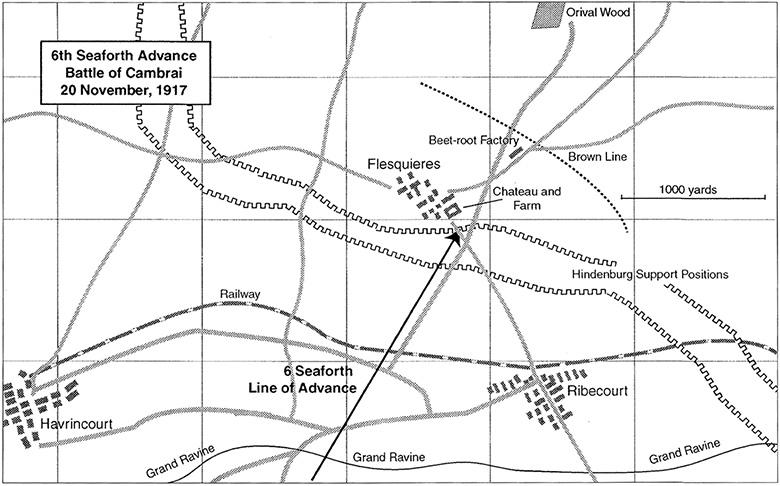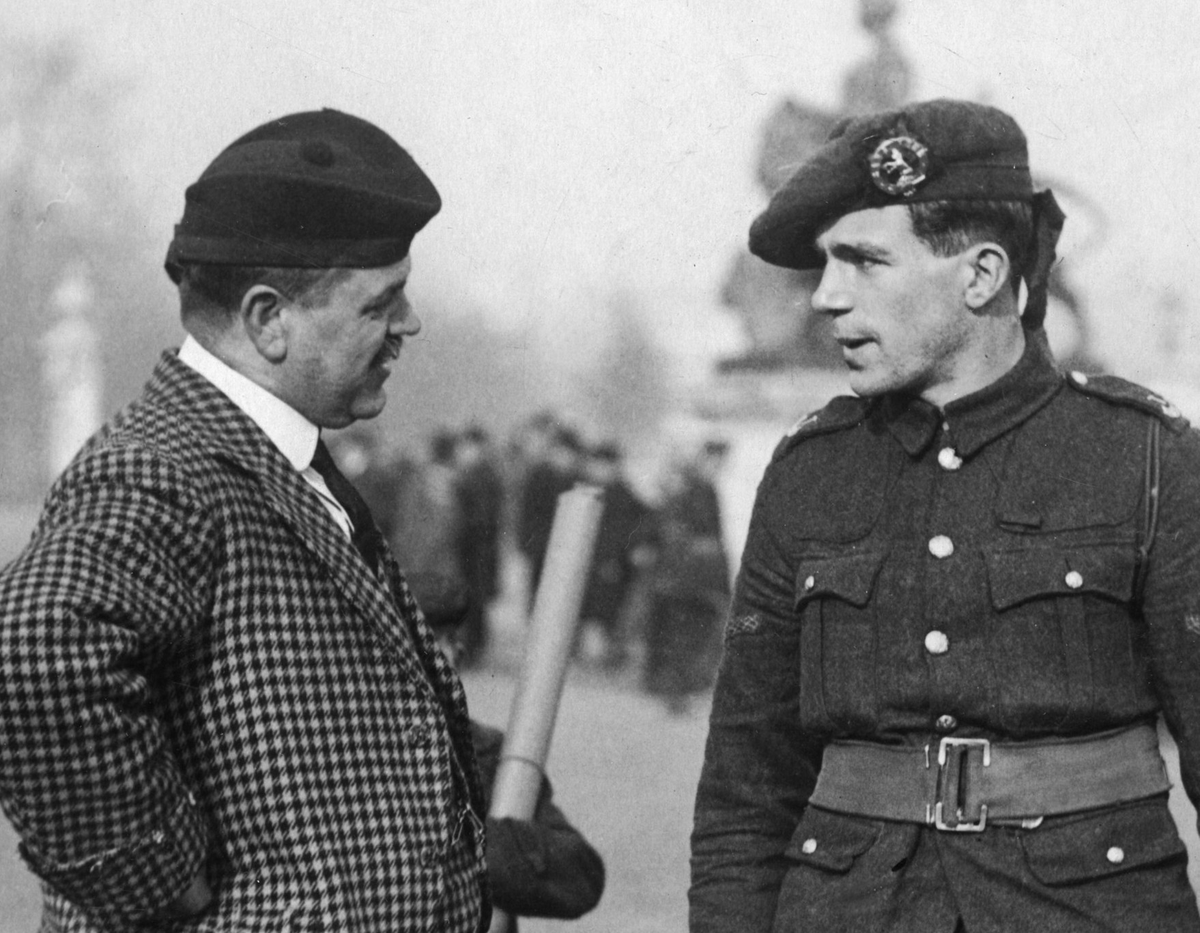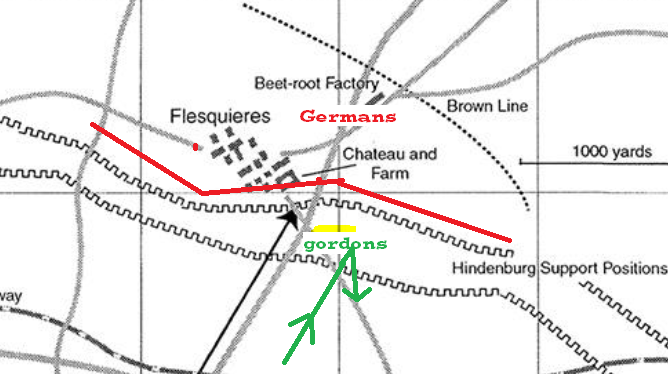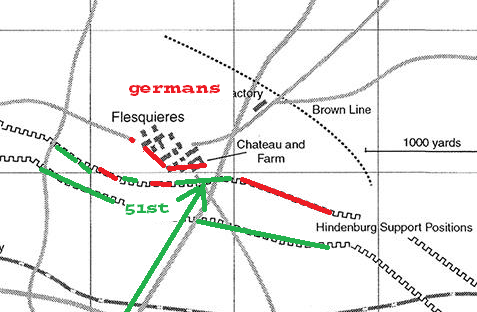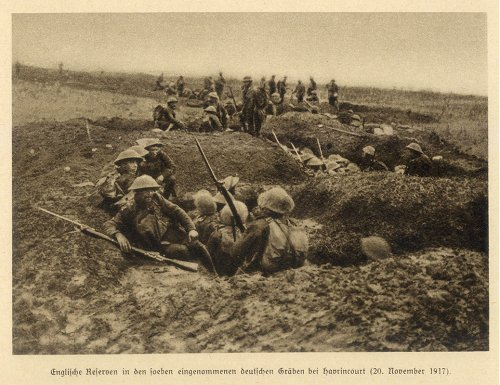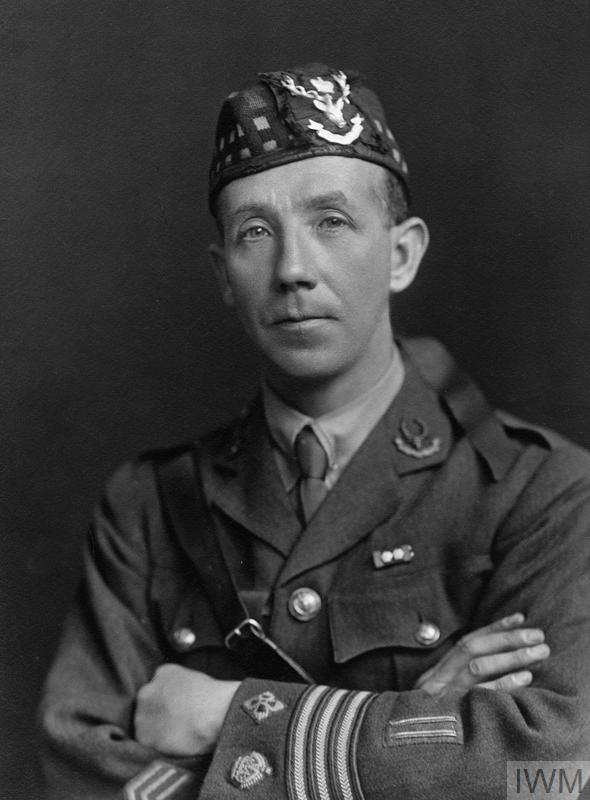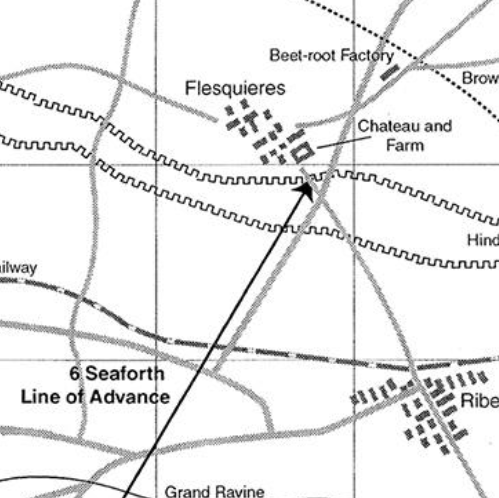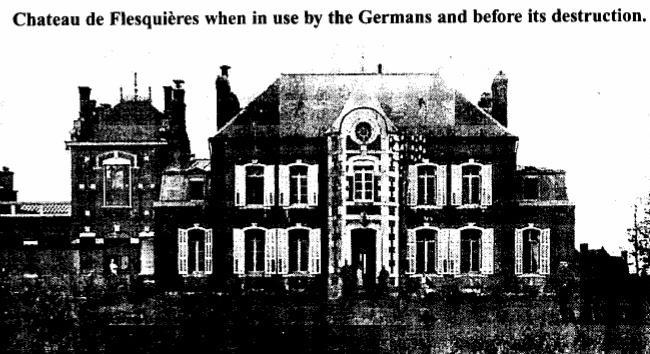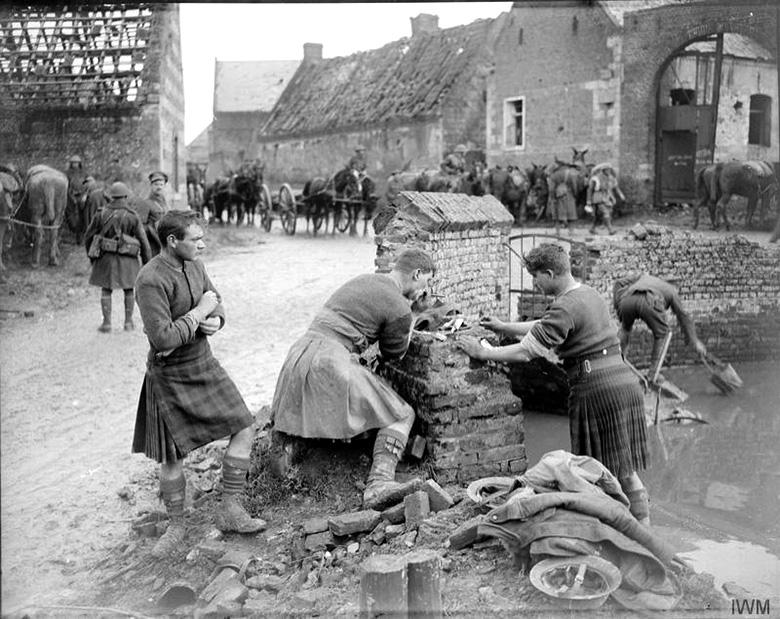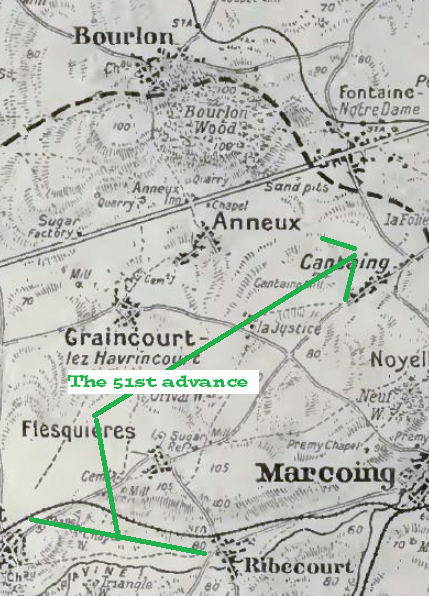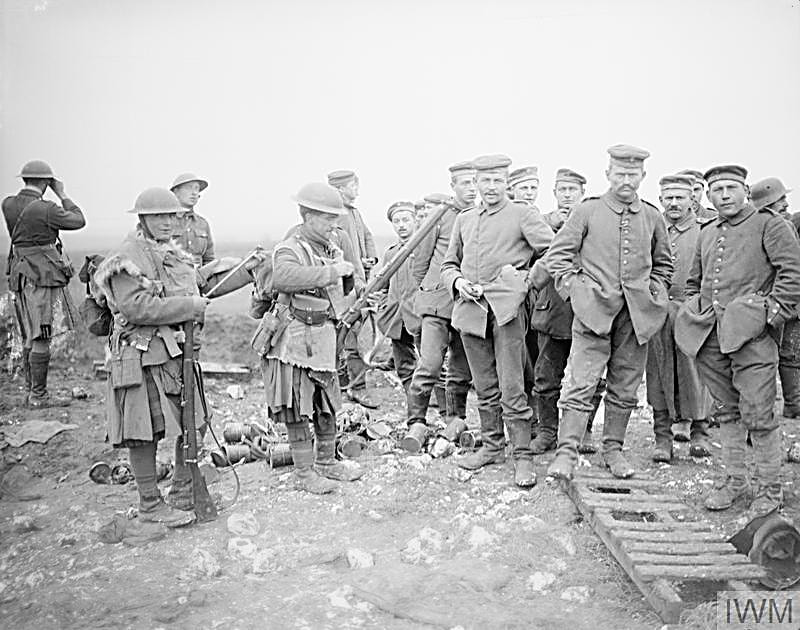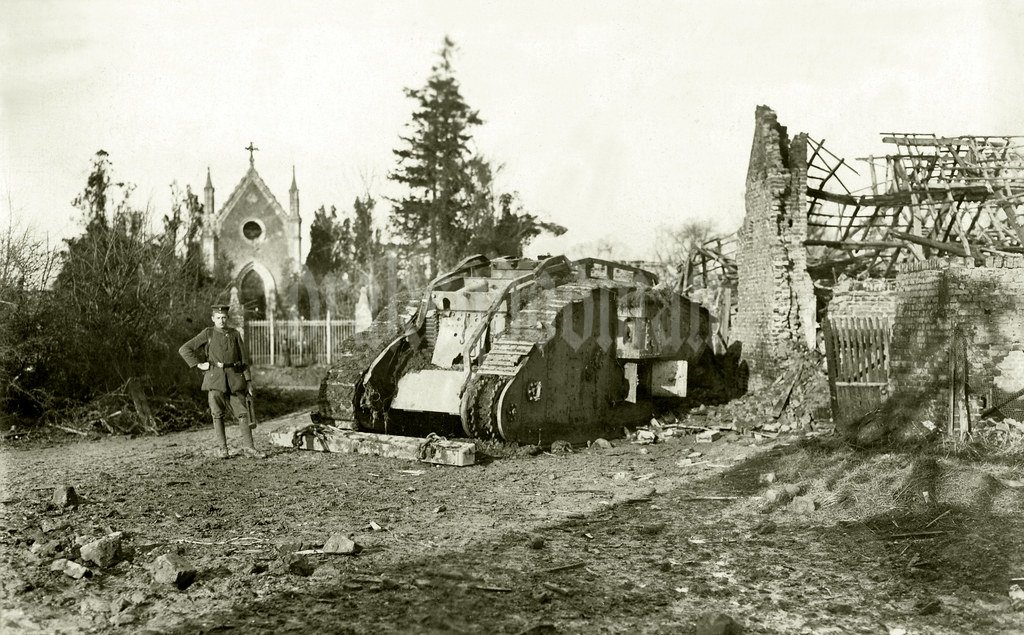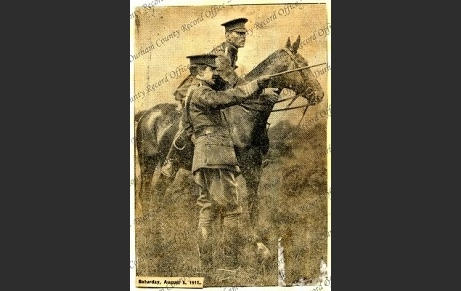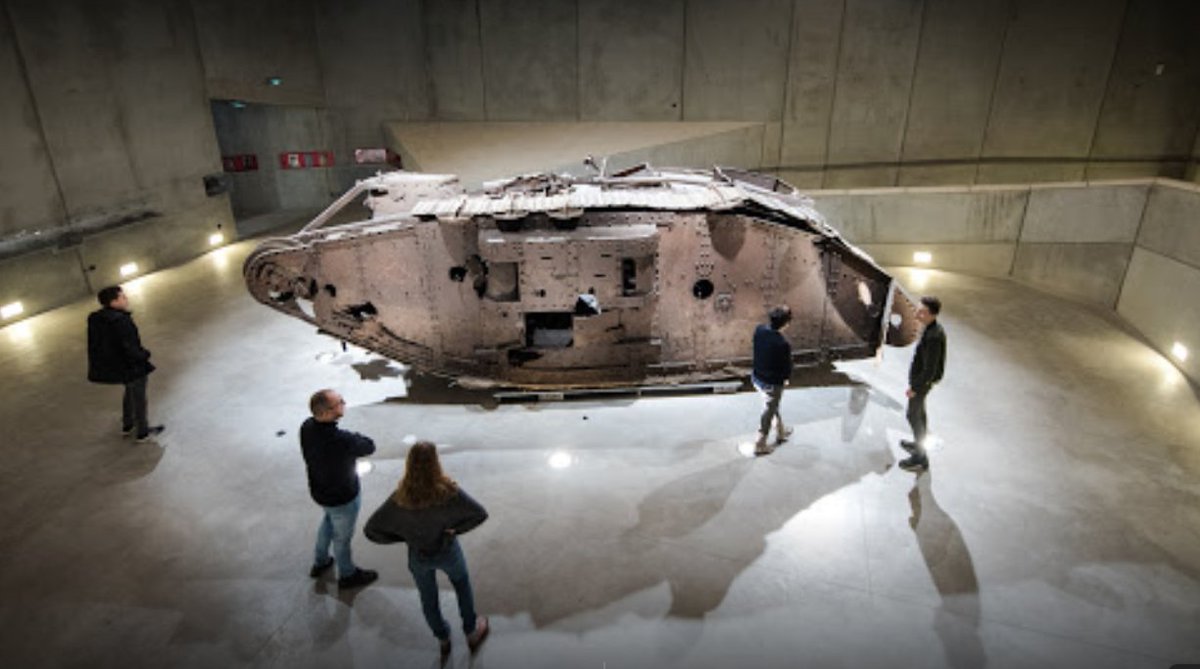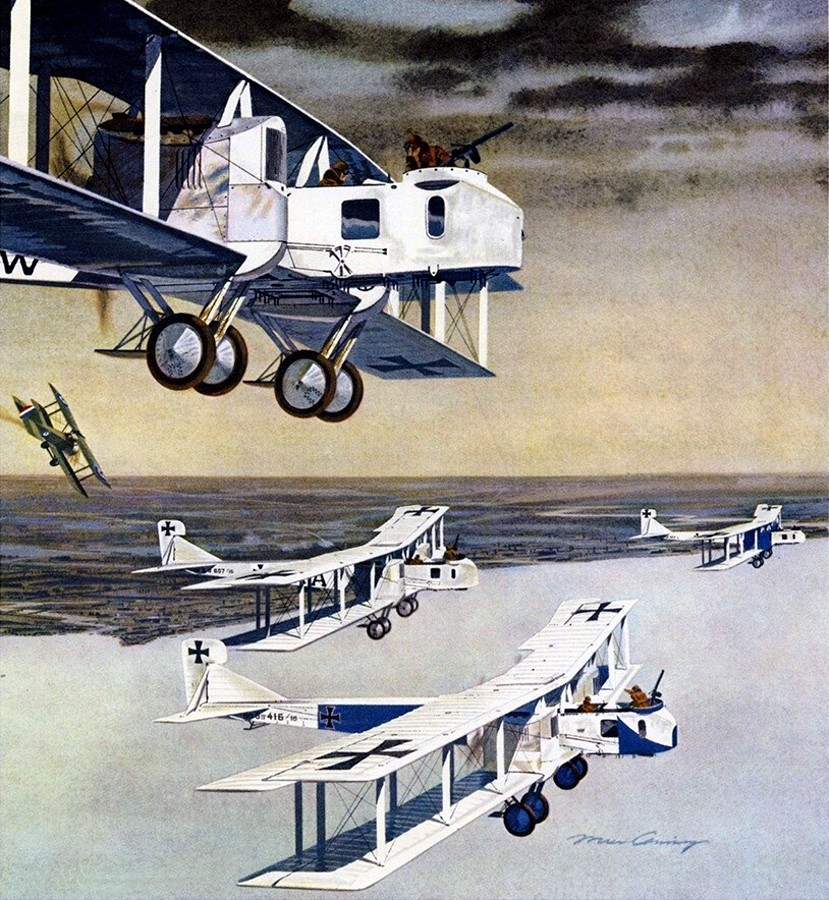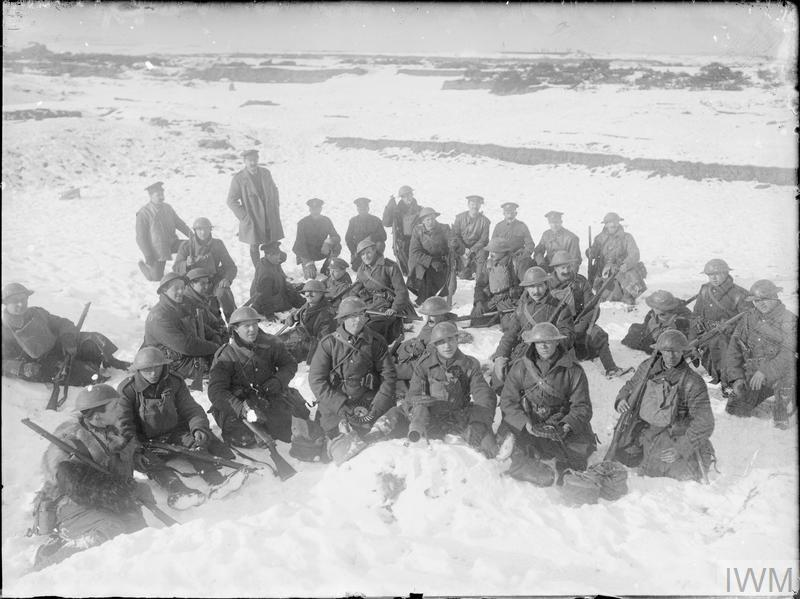As monuments are being torn down i am going to create one. The work started last week when i re-homed a tatty old rescue sword. All week i have been tinkering. Yesterday i started the research.
This will be an ongoing thread for a bit.
#sword
This will be an ongoing thread for a bit.
#sword
Time hadn& #39;t been kind. Must have been stored either completely damp or in a damp space. Active rust was having a go at the blade and guard leaving some quite deep pitting. Doubtful it was going to see another century.
The 1897 pattern sword is very common and reasonably cheap. All antique swords are like time machines to me. They were present in momentous times and often carried by people in fear of their lives. I can& #39;t help travelling back and wondering at it all when holding one.
The majority are nameless sadly. Their history and their owners lives lost to fact. However this dog eared sword had clues.
You can go round the houses searching the Gazette searching for matching initials. This was a Wilkinson sword with serial number and the ledger still exists. For a small fee you can receive a copy of the original sales entry. :)
We have a name! Can& #39;t read writing. Luckily Mrs E solved it.
What& #39;s your guess? Winner gets a nod!
What& #39;s your guess? Winner gets a nod!
And here he is. Armed with his cane here. Picture kept online at the Imperial war museum.
https://www.iwm.org.uk/collections/item/object/205290547">https://www.iwm.org.uk/collectio...
https://www.iwm.org.uk/collections/item/object/205290547">https://www.iwm.org.uk/collectio...
Appointed Brigade Major in 1915. Bit confused. Never realised Lieutenants could be Majors in the Territorials. I think Brigade Major needs explaining to me!
You can only go so long looking at the gazette.
So jumped to findmypast.
First result 1919.
FW Bewsher. What have you been doing the last 5 years??????
So jumped to findmypast.
First result 1919.
FW Bewsher. What have you been doing the last 5 years??????
Got ahead of myself. If anyone is still interested i am now starting at the beginning of his life in the 1880s.
Using findmypast. Live tweeting!
Born 1886. Alton Hampshire to Samuel (bursar at St Tane school) and Eliza.
Baptized All Saints Headley
Using findmypast. Live tweeting!
Born 1886. Alton Hampshire to Samuel (bursar at St Tane school) and Eliza.
Baptized All Saints Headley
Parents lived at Crabtree house. This is the website for that house!Seems ot have been a shop. https://headley-village.com/explore/crabtree
Side">https://headley-village.com/explore/c... info. Headley suffered a riot in 1830! The aftermath provides a #wellingtonwednesday @mcribbHistory
Shop in 1955.
Side">https://headley-village.com/explore/c... info. Headley suffered a riot in 1830! The aftermath provides a #wellingtonwednesday @mcribbHistory
Shop in 1955.
Still there. Across from the Hollybush!
Pub. Beer gardens. Beer. Fun.......... https://abs.twimg.com/emoji/v2/... draggable="false" alt="😭" title="Laut schreiendes Gesicht" aria-label="Emoji: Laut schreiendes Gesicht">
https://abs.twimg.com/emoji/v2/... draggable="false" alt="😭" title="Laut schreiendes Gesicht" aria-label="Emoji: Laut schreiendes Gesicht">
Pub. Beer gardens. Beer. Fun..........
Still at Crabtree 4 years later. Place must be heaving. 1891 Census.
Samuel now bursar at St Pauls school London. Think this is the place.
Samuel now bursar at St Pauls school London. Think this is the place.
Its 1901. Peak Empire. Now at 73 Colet court, Hammersmith rd. Part of it is still there! Nice Victorian gothic!
Its 1910 and 24 year old Frederick has joined the 5th (City of London battalion) London rifles. A part time militia that had seen action in South Africa a few years before.
In civilian life he is an assistant schoolmaster (following his father) at St Pauls. He now has a BA. He& #39;s been off to University somewhere.
The 1911 census shows an even bigger household.
The 1911 census shows an even bigger household.
Now we know where that BA came from. Fred was at @MertonCollege Oxford sometime between 1900-10. Charging around quadrangles to 80s synth.
There must be some Merton college war record???
There must be some Merton college war record???
Link to National archive Medal card. More mentions in despatches.
http://discovery.nationalarchives.gov.uk/details/r/D6303228">https://discovery.nationalarchives.gov.uk/details/r...
http://discovery.nationalarchives.gov.uk/details/r/D6303228">https://discovery.nationalarchives.gov.uk/details/r...
Its the 31st of August 1914. The country is getting used to the idea that its at war. Things need sorting out and Bewsher has been added to the list of Aides De Camp.
Until i work out where Fred went here is a quick bit of wartime info on his wife Eira Bewsher.
Eira joined the Red cross in 1918 and worked at Harecombe nr Crowborough and Walsh Manor, Jarvis Brook as a pantry maid.
I think this was Harecombe auxillary hospital.
Eira joined the Red cross in 1918 and worked at Harecombe nr Crowborough and Walsh Manor, Jarvis Brook as a pantry maid.
I think this was Harecombe auxillary hospital.
Don& #39;t know what happened. May find out later. Sadly no pic of Eira so far either. A small reminder of her work.
And a nice page on the evolution of nursing uniforms during WW1: http://www.scarletfinders.co.uk/157.html
https://www.scarletfinders.co.uk/157.html&... href="https://twtext.com//hashtag/nurses"> #nurses
And a nice page on the evolution of nursing uniforms during WW1: http://www.scarletfinders.co.uk/157.html
Fred was up before the beak in 1907 for cycling around at 11.30pm without lights! Fined 8s 6d. Which is in todays money. Hang on....
.
.
.
Wow! You could get a plumber round for £33!
Calculator is at the National archives :)
#currency-result">https://www.nationalarchives.gov.uk/currency-converter/ #currency-result
https://www.nationalarchives.gov.uk/currency-... href="https://twtext.com//hashtag/inflation"> #inflation
.
.
.
Wow! You could get a plumber round for £33!
Calculator is at the National archives :)
#currency-result">https://www.nationalarchives.gov.uk/currency-converter/ #currency-result
Very interesting info about Fred. Seems he went to France in & #39;17. Excerpt from a PhD thesis by Trevor Gordon Harvey https://bit.ly/30T3onm ">https://bit.ly/30T3onm&q...
A search for Bewsher on abebooks reveals quite a few history books. Need to check but dates and unusual name are big coincidences. Frederick Bewsher the warrior poet?
https://www.abebooks.co.uk/servlet/SearchResults?an=f.%20bewsher&bi=0&bsi=0&bx=off&ds=30&recentlyadded=all&sortby=17&prevpage=3">https://www.abebooks.co.uk/servlet/S...
https://www.abebooks.co.uk/servlet/SearchResults?an=f.%20bewsher&bi=0&bsi=0&bx=off&ds=30&recentlyadded=all&sortby=17&prevpage=3">https://www.abebooks.co.uk/servlet/S...
Bewsher recap:
1886-1950
Merton Oxford & #39;05-09
Joins (T) Army & #39;09
Marries Eira & #39;13
Writes History books
War! Joins General Staff
Joins 51st H& #39;land div on frontline.
Awarded MC & #39;17 DSO & #39;19
Made Companion? CBE?? & #39;19
At HQ 1920
Eira dies 1920
.
.
.
.
.
#fredbewsher
1886-1950
Merton Oxford & #39;05-09
Joins (T) Army & #39;09
Marries Eira & #39;13
Writes History books
War! Joins General Staff
Joins 51st H& #39;land div on frontline.
Awarded MC & #39;17 DSO & #39;19
Made Companion? CBE?? & #39;19
At HQ 1920
Eira dies 1920
.
.
.
.
.
#fredbewsher
*Eira dies 1921.
Have gone back in time again. Keep finding earlier info.
This is Fred Bewshers school sports day report from 1899! @StPaulsSchool
#fredbewsher
This is Fred Bewshers school sports day report from 1899! @StPaulsSchool
#fredbewsher
It seems Fred was an all round sportsman who enjoyed Rowing, Cricket and Rugby.
In 1908 he plays in a trial match(i think) for @rosslynpark Rugby club versus Old Bedfordians.
In 1908 he plays in a trial match(i think) for @rosslynpark Rugby club versus Old Bedfordians.
Fred played in a Rugby trial match in 1909 and gets a glowing report highlighting his outstanding wing play!
Fred seems to have made it into the
@rosslynpark
team again. Here he is listed for a game in December! Remember this was back when Decembers were proper Decembers! Not like the ones now.
@rosslynpark
team again. Here he is listed for a game in December! Remember this was back when Decembers were proper Decembers! Not like the ones now.
Freds Rugby career continues. Here are his reports of the victory against London Irish and the defeat against London Welsh!
A postcard of @rosslynpark Vs Stade Francais and a team photo. Both from 1910. Is Fred in the team photo?
Freds older sister Frances Bewsher passed away. She seems to have had a breakdown from overwork. Diagnosed with Neurasthenia she suffered for a while before passing away in a nursing home. She was 29.
Freds Rugby career reminded me of this!.
https://www.youtube.com/watch?v=k441fS2Z-ZY">https://www.youtube.com/watch...
https://www.youtube.com/watch?v=k441fS2Z-ZY">https://www.youtube.com/watch...
The boundless energy of Fred Bewsher! He& #39;s taken the men on a long distance march of 32.5 miles! From Bunhill row to Bisley.
#fredbewsher
#fredbewsher
Two weeks later in April 11 Fred goes on another jaunt with the men. This time from Duke of Yorks steps in London to Brighton. 52 miles in full kit! Well done Fred!
#fredbewsher
#fredbewsher
https://twitter.com/DiariesEmpire/status/1283387942568964097">https://twitter.com/DiariesEm...
https://twitter.com/DiariesEmpire/status/1283421830922022913">https://twitter.com/DiariesEm...
https://twitter.com/DiariesEmpire/status/1283424270387941376">https://twitter.com/DiariesEm...
Fred remains in London for the next 18 months attached to Headquarters.
On 21st July 1916 Fred is posted to France as General H. Pelham-Burns Brigade Major.
Pelham-Burns is the General Officer Commanding the 51st Highland Division.
On 21st July 1916 Fred is posted to France as General H. Pelham-Burns Brigade Major.
Pelham-Burns is the General Officer Commanding the 51st Highland Division.
The 51st Div had been in a sorry state. The previous summer it was thrown at the German Offensive at Ypres, witnessing the first gas attacks on the Western Front. Being hastily assembled and very green it produced mixed results.
#fredbewsher
#fredbewsher
It was withdrawn to a quieter part of the line at the Somme in late 1915 and allowed to re-organise.
It was here that Fred joined them months later. The Somme was now far from quiet.
#fredbewsher #thesomme
It was here that Fred joined them months later. The Somme was now far from quiet.
#fredbewsher #thesomme
The 51st Div where attacking High wood when Fred arrived. It had been taken by the Cavalry, then lost to a German counter and was now being charged by the Highlanders.
3500 casualties later they called a stalemate.
A baptism of Fire. Later Fred writes this of it:
#fredbewsher
3500 casualties later they called a stalemate.
A baptism of Fire. Later Fred writes this of it:
#fredbewsher
Should add there is an excellent history of the 51st Div online. Going to be using it a lot!
https://51hd.co.uk/history/battle_somme_high_wood">https://51hd.co.uk/history/b...
https://51hd.co.uk/history/battle_somme_high_wood">https://51hd.co.uk/history/b...
Beaumont Hamel Nov 1916
BH had been attacked in July on the first day of the Somme and added to the disaster. The 1st Newfoundland regiment took a very heavy toll. Only 68 out of 800 were left the following day.
The Newfoundland Caribou memorial.
BH had been attacked in July on the first day of the Somme and added to the disaster. The 1st Newfoundland regiment took a very heavy toll. Only 68 out of 800 were left the following day.
The Newfoundland Caribou memorial.
Things had moved on. In preparation for the November attack raiding parties went out capture prisoners and assess barb wire damage from artillery. Fred writes:
Fred had been with the 51st for four months now and this was the first big battle he helped plan.
On the 13th of November at 5.45am a mine was detonated under the German positions and an intense barrage opened up. The Highlanders went over the top.
On the 13th of November at 5.45am a mine was detonated under the German positions and an intense barrage opened up. The Highlanders went over the top.
A rolling barrage plan for the Battle!
https://51hd.co.uk/accounts/op_order_149_instruction">https://51hd.co.uk/accounts/...
https://51hd.co.uk/accounts/op_order_149_instruction">https://51hd.co.uk/accounts/...
https://51hd.co.uk/accounts/152_brigade_attack_beaumont_hamel">https://51hd.co.uk/accounts/...
The rolling barrage appeared to have caught the Germans off guard. The Highlanders broke through the German lines while many were still sheltering. Progress was held up as small battles erupted among the onrushing Highlanders as the Germans emerged.
However by the next day Beaumont Hamel had been captured and all lines taken except the final objective.
Fred writes:
Fred writes:
The 51st took a break over xmas and re-emerged in early April 1917 for the Battle of Arras.
Arras. Then and now.
Arras. Then and now.
On the 9th April the Division was ordered to take the southern shoulder of Vimy ridge. The division had to attack a front 4000 yds wide and 5000 yds deep.
A good explanation of Freds role during the Battles: https://twitter.com/saletlux/status/1284004353817432077">https://twitter.com/saletlux/...
8th April
The 51st move forward to their assembly trenches. The Canadians are to their left. The pals battalions of the Industrial north are to their right
Ahead is Vimy ridge.
#fredbewsher
The 51st move forward to their assembly trenches. The Canadians are to their left. The pals battalions of the Industrial north are to their right
Ahead is Vimy ridge.
#fredbewsher
Above them flies the Red Baron!
He claims two spotter planes that day. His 38&39th kills. One of the planes, a Be 2g crashes into the area ahead of the 51st.
2/Lt. Keith Ingleby MacKenzie and 2/Lt. Guy Everingham are killed.
#fredbewsher
He claims two spotter planes that day. His 38&39th kills. One of the planes, a Be 2g crashes into the area ahead of the 51st.
2/Lt. Keith Ingleby MacKenzie and 2/Lt. Guy Everingham are killed.
#fredbewsher
Account from the 6th Seaforth Highlanders:
At exactly 5.30 a.m. the British bombardment intensified to a crescendo as every artillery piece fired onto the German positions and machine-guns joined in the barrage.
At exactly 5.30 a.m. the British bombardment intensified to a crescendo as every artillery piece fired onto the German positions and machine-guns joined in the barrage.
Meanwhile the first waves of attackers clambered out of their trenches. The barrage, although reported not to be as heavy as at Beaumont Hamel, was very accurate and the leading wave was able to close up behind its protection.
On the right and centre the men were as close as 10 yards, and on the left within 15 to 20 yards of the protective curtain of British shells. The barbed wire had been well cut and did not pose any significant obstacle so, at
5.34 a.m. when the barrage lifted off the first German line, the 6th Seaforth rushed forward and took up firing positions on the edge of the trench.
Initially they made no attempt to jump into the trenches because they had learnt that the Germans were likely to rush out of their dug-outs and start firing along the trench, which in the past had caused many casualties.
By staying on the parapet the Highlanders were reasonably protected from any fire from the trench itself and they could shoot the enemy down as they emerged from their dug-out. Once the enemy been satisfactorily dealt with the Highlanders could then climb down into the trenches.
Read more: https:///accounts/6th_seaforth_roclincourt_arras #ixzz6SWCkAHNO
Freds Brigade went slightly awry.
1830 hours: 154 Brigade reported it had reached Brown line. In fact 154 Brigade had been mistaken and had capture a position (Tommy Trench) several hundred yards west of the objective and had to work back in.
Read more: #ixzz6SWEu4eHy">https://51hd.co.uk/history/battle_of_arras #ixzz6SWEu4eHy">https://51hd.co.uk/history/b...
1830 hours: 154 Brigade reported it had reached Brown line. In fact 154 Brigade had been mistaken and had capture a position (Tommy Trench) several hundred yards west of the objective and had to work back in.
Read more: #ixzz6SWEu4eHy">https://51hd.co.uk/history/battle_of_arras #ixzz6SWEu4eHy">https://51hd.co.uk/history/b...
The Battle of Vimy ridge ended in victory. The Canadians had taken the heights of Vimy ridge and earned Immortality. The Highlanders and the Pals where on the lower plain. The Germans retreating to Lens.
Someone has only gone and put a 51st Highland division sletchbook online!
Some scenes from Beaumont Hamel.
https://net.lib.byu.edu/estu/wwi/memoir/docs/51st/51st2.htm">https://net.lib.byu.edu/estu/wwi/...
Some scenes from Beaumont Hamel.
https://net.lib.byu.edu/estu/wwi/memoir/docs/51st/51st2.htm">https://net.lib.byu.edu/estu/wwi/...
After the success of the first two days the 51st got bogged down in heavy fighting around Vimy ridge as the Germans counter-attacked.
The division retired from the Battle around the 26th April.
They had 4500 killed, wounded and missing.
Sketches of the Highlanders at Roeux.
The division retired from the Battle around the 26th April.
They had 4500 killed, wounded and missing.
Sketches of the Highlanders at Roeux.
Some side info to Arras:
Poet Edward Thomas was killed by shellfire the day after the attack.
Composer Ernest Moeran was badly wounded later in the battle.
Siegried Sassoon wrote a poem called the General set on the eve of Battle.
Poet Edward Thomas was killed by shellfire the day after the attack.
Composer Ernest Moeran was badly wounded later in the battle.
Siegried Sassoon wrote a poem called the General set on the eve of Battle.
Nice touch Tom! https://twitter.com/tom4141tom/status/1284993641988186112">https://twitter.com/tom4141to...
The Battle over for the 51st Division they recuperate and make ready for the next one.
On 4th June 1917 Fred is awarded the Military Cross! Second highest honour! His award was announced as part of a much larger batch and so sadly there is no citation :(
#fredbewsherMC
On 4th June 1917 Fred is awarded the Military Cross! Second highest honour! His award was announced as part of a much larger batch and so sadly there is no citation :(
#fredbewsherMC
3rd Ypres/Passchendaele 1917
Fred and the 51st moved up to Ypres in June 17. They were informed that they would be part of the great attack scheduled for July 31st. For the next 6 weeks the Division trained intensively.
Fred and the 51st moved up to Ypres in June 17. They were informed that they would be part of the great attack scheduled for July 31st. For the next 6 weeks the Division trained intensively.
At 3.50 A.M., 31st July, the third battle of Ypres opened. The artillery had begun the cutting of the enemy wire. The 51st advanced to the Blue line.
Read more: #ixzz6TvT6bwZd">https://51hd.co.uk/history/the_third_ypres #ixzz6TvT6bwZd">https://51hd.co.uk/history/t...
Read more: #ixzz6TvT6bwZd">https://51hd.co.uk/history/the_third_ypres #ixzz6TvT6bwZd">https://51hd.co.uk/history/t...
5.15am. Blue line captured. Resistance patchy. Onto the more heavily defended Black line.
Heavy fighting. Much gallantry. 6th Black Watch sustain most casualties, 9 officers and 292 other ranks.
By 6.40 A.M. the Black outpost line was captured on the whole battalion front.
By 6.40 A.M. the Black outpost line was captured on the whole battalion front.
7.45 A.M. All arms are moving forward. Field guns now at old British front line. 8th Royal Scots are building a road across the old no mans land.
https://net.lib.byu.edu/estu/wwi/memoir/docs/51st/51st2.htm">https://net.lib.byu.edu/estu/wwi/...
https://net.lib.byu.edu/estu/wwi/memoir/docs/51st/51st2.htm">https://net.lib.byu.edu/estu/wwi/...
7.50 A.M. The Gordon Highlanders on the right flank reach the Green line. Its final Objective.
Private George Mcintosh wins the Victoria Cross.
https://51hd.co.uk/accounts/pvt_mcintosh_vc">https://51hd.co.uk/accounts/...
Private George Mcintosh wins the Victoria Cross.
https://51hd.co.uk/accounts/pvt_mcintosh_vc">https://51hd.co.uk/accounts/...
10.30 A.M. Black Watch reach the Green line. Two tanks also arrive and begin to subdue final resistance.
King Edwards Horse try to exploit the gains but are cut up badly. Its during this time that Sgt. Edwards rescues the Major. This and other acts earn him the Victoria Cross.
King Edwards Horse try to exploit the gains but are cut up badly. Its during this time that Sgt. Edwards rescues the Major. This and other acts earn him the Victoria Cross.
The 51st accomplished all their objectives in very trying conditions. Casualties totalled 52 officers (32.5 per cent) and 1516 other ranks (28.07 per cent).
Read more here: #ixzz6Tvdm7eRa">https://51hd.co.uk/history/the_third_ypres #ixzz6Tvdm7eRa">https://51hd.co.uk/history/t...
Read more here: #ixzz6Tvdm7eRa">https://51hd.co.uk/history/the_third_ypres #ixzz6Tvdm7eRa">https://51hd.co.uk/history/t...
Bewshers progress
A quick map showing Bewshers advance through Picardy and the Pas de Calais into Belgium and Poelcappelle. July 1916 to September 1917.
A quick map showing Bewshers advance through Picardy and the Pas de Calais into Belgium and Poelcappelle. July 1916 to September 1917.
Fred& #39;s thoughts on the situation:
Facing the 51st in an almost like for like position was the German 36th Infantry division.
Tried to find a related picture of them. Nada :(
Tried to find a related picture of them. Nada :(
19 September 17
The Battle began with a 24 hour bombardment of the German trenches and wire. 32 machine guns also joined in by attacking distant pillboxes and fortified farmhouses.
The Battle began with a 24 hour bombardment of the German trenches and wire. 32 machine guns also joined in by attacking distant pillboxes and fortified farmhouses.
20 September 17
5.40 A.M. Attack launched.
Very heavy fighting at pheasant trench. Gunfire quickly descends into hand to hand fighting. Seaforth Highlanders succeed in winning the fight.
5.40 A.M. Attack launched.
Very heavy fighting at pheasant trench. Gunfire quickly descends into hand to hand fighting. Seaforth Highlanders succeed in winning the fight.
The advance continues. Heavy machine guns engage each other. Fortified farmhouses are stormed. The Seaforth Highlanders reach and secure the Blue line. First objective completed.
All the Highlander Battalions had reached their first objective before their neighbouring divisions. This allowed time to consolidate. A fortunate event as the Germans wanted their trenches back.
The Germans counter-attack
11.45 A.M. & 12.30 PM - The Gordon Highlanders are attacked. Germans forced back by flank fire.
11.45 A.M. & 12.30 PM - The Gordon Highlanders are attacked. Germans forced back by flank fire.
5 PM - German Guns open up and pound the captured Blue line. Masses of German Infantry can be seen advancing from Poelkapelle.
For an hour the germans launch repeated attacks. At this point every single officer of the Gordon Highlanders had been wounded or killed.
6PM - The order is given for a General withdrawal to a V-shaped defensive flanking position. It is hoped the Germans will push into the space and then be crushed by flank fire.
Up in the Heavens Hannibal is smiling down at this.
Up in the Heavens Hannibal is smiling down at this.
The Germans entered the V. Both sides of the V opened up and the Germans were caugt in a murderous crossfire.
Meanwhile the leaderless Gordons had rallied and re-armed and joined up with the Argyle and Sutherlands. Together they launch an attack on the point of the V.
Meanwhile the leaderless Gordons had rallied and re-armed and joined up with the Argyle and Sutherlands. Together they launch an attack on the point of the V.
The point of the V would be as far as the Germans were to reach. As dusk fell the 51st formed a new front line. The Northern and Southern of the Blue line had held. The centre was still contested.
The Germans continued to counter-attack but suffered badly. The right battalion, the 6th Seaforth Highlanders, had most opportunities of inflicting losses on the enemy. One company alone had five Lewis guns firing on the enemy at the same moment. One gun getting through 28 drums!
The total casualties to the Division during the operations lost 46 officers and, 110 other ranks, the 154th Brigade, which carried out the attack, losing 32 officers and 891 other ranks, and the 4th Gordon Highlanders 12 officers.
Once again i have leaned heavily on the 51st Division Museum website. So lucky its there to plunder.
Will donate when I& #39;m done.
https://51hd.co.uk/history/poelcappelle">https://51hd.co.uk/history/p...
Will donate when I& #39;m done.
https://51hd.co.uk/history/poelcappelle">https://51hd.co.uk/history/p...
Cambrai November 1917
The 51st Division have travelled to the Hindenburg line in the utmost secrecy. They are now considered assault troops by the Germans and their presence spells danger.
The 51st Division have travelled to the Hindenburg line in the utmost secrecy. They are now considered assault troops by the Germans and their presence spells danger.
They faced a triple line of defences:
The first was a maze of deep trenches and outposts, all protected by deep fields of barbed wire.
The first was a maze of deep trenches and outposts, all protected by deep fields of barbed wire.
The second, which was well connected to the first by communication trenches, was the double trench line of the support system, again heavily wired.
The third was about 4,000 yards back and consisted of yet another double trench line.
The third was about 4,000 yards back and consisted of yet another double trench line.
The front for the attack starts at 1,500 yards wide, grows to a maximum 3,500 yards at the third line, and narrows down to about 2,200 yards at the final objectives.
The Tanks were to go in three waves:
1st wave consisted of 12 & #39;Rovers& #39;. These were to crush the barbed wire.
2nd wave of 36 & #39;fighting tanks& #39;. These were detailed to take on the trenches and strongpoints.
3rd wave of 24 fighting tanks to form up and help attack Flesquieres.
1st wave consisted of 12 & #39;Rovers& #39;. These were to crush the barbed wire.
2nd wave of 36 & #39;fighting tanks& #39;. These were detailed to take on the trenches and strongpoints.
3rd wave of 24 fighting tanks to form up and help attack Flesquieres.
6.30 A.M. 20th November
The advance began on a fine but cloudy morning, the visibility being about 200 yards. As the artillery barrage opened, the twelve wire-crushing tanks moved off, accompanied by small parties of infantry detailed for the capture of the outpost line.
The advance began on a fine but cloudy morning, the visibility being about 200 yards. As the artillery barrage opened, the twelve wire-crushing tanks moved off, accompanied by small parties of infantry detailed for the capture of the outpost line.
There was considerable hostile machine-gun fire, but it was wild and harmless. Between 9.15 and 9.40 A.M. all the leading battalions had reached their objectives.
The 5th Seaforth Highlanders on the right carried out their advance practically without a check, making a bag of 9 machine-guns and 230 prisoners, including 14 officers. The total number of casualties sustained by the battalion in this operation was twenty-five.
It was during this encounter that Lance-Corporal E. MacBeath wins the Victoria Cross.
Side info: Macbeath emigrated to Canada after the war and joined the Vancouver police dept. He was shot and killed whilst on duty in 1922.
Side info: Macbeath emigrated to Canada after the war and joined the Vancouver police dept. He was shot and killed whilst on duty in 1922.
On the Hindenburg line
The Highlanders now faced machine-gun fire from in front and the sides as they filtered through the first trenches. Four tanks have got stuck in the man made ravines exposing the supporting Infantry to German fire.
The Highlanders now faced machine-gun fire from in front and the sides as they filtered through the first trenches. Four tanks have got stuck in the man made ravines exposing the supporting Infantry to German fire.
The Black Watch were raked with enfilade machine-gun fire. A platoon was detached. Advancing under cover of its own Lewis guns, it wiped out the entire garrison. The Germans here offered a magnificent resistance, and fought until the last man was killed.
Elsewhere lone Soldiers carrying bags of grenades are crawling towards German machine-gun posts in an effort to subdue resistance and secure the line for the next wave.
There is now only one operational tank of the first 48 left on the Hindenburg line. Resistance is finally quelled when the third wave of tanks arrive.
The Gordon Highlanders have arrived at their objective, having captured a total of 10 machine-guns, 2 trench-mortars, and 400 prisoners, including a battalion commander complete with his staff.
So far so good according to Fred. However the tanks are about to meet their perennial nemesis. Field guns.
Fred writes next:
The next stage the advance was through the enemy’s gun line, with the result that the tanks had to cross the trenches whilst exposed to close-range fire of field-guns.
The next stage the advance was through the enemy’s gun line, with the result that the tanks had to cross the trenches whilst exposed to close-range fire of field-guns.
The infantry depended absolutely and entirely on the tanks for the crushing of the large belts of wire opposed to them, any losses sustained by the tanks, as will be seen, seriously prejudiced the infantry’s chances of success.
The initial trenches had been taken. On the right 6 tanks made their way to the second line of barb wire and trenches followed by the Gordon Highlanders.
In doing so they became exposed to a field gun battery 500yds distant. Within minutes all the tanks were lost.
In doing so they became exposed to a field gun battery 500yds distant. Within minutes all the tanks were lost.
The Gordons were now stuck halfway through a barb wire system. Trapped by the wire and machine guns they were decimated in moments.
Things were better in the centre. The seven tanks pierced the barbed wire and the Seaforths gained access to the second line with only three casualties.
The first line was captured. The second was being contested. The Final objective the village of Flesquieres was a barb wired bastion of invincibility raining fire down on all. It needed Tanks and all the Tanks were gone.
The Highlanders made repeated attempts to capture their final objective. However the intact barbed wire and Machine Guns either fixated or swatted them away. The Gordons once again made the most progress but were beaten back by German counter attacks.
The troops at Havrincourt
The troops at Havrincourt
2nd Lt Donald Grant, accompanied by his servant, got further forward than anyone else, fighting their way along a communication trench. Grant was reported to have bayoneted a number of Germans but when they left the safety of the trench to advance further they were both killed.
In an effort to re-organise and rally the men Lt.Col Macdonald of the Seaforths made his way to the contested trenches and led the next attack in person.
With the help of fire from Broken down tanks he reached the edge of Flesquiere.
With the help of fire from Broken down tanks he reached the edge of Flesquiere.
5PM
Six more Tanks arrive and enter the Village. The crafty Germans refused to play ball and hid whilst the Tanks cruised around the village with nothing to fire at. The Highlanders missed a trick by not following them in. Thus
the status quo returned.
Six more Tanks arrive and enter the Village. The crafty Germans refused to play ball and hid whilst the Tanks cruised around the village with nothing to fire at. The Highlanders missed a trick by not following them in. Thus
the status quo returned.
Darkness descended and the Highlanders dug in and waited. The next day patrols went out and discovered Flesquieres had been abandoned. The Highlanders moved up and secured their final Objective.
A mark IV tank with a facine. The facines were a bundle of wood designed to fill in Trenches to allow the Tank to pass over. With mixed success.
With the other sections of the front moving forward the Highlanders moved on Cantaing. Onto more barbed wire, more machine guns, more trenches.
After an hour and a half of fighting ten Tanks arrived and entered the villager. The Highlanders followed closely this time and after a short fight captured the Village along with 300 Germans.
Here are the actual Highlanders and the actual Germans.
Here are the actual Highlanders and the actual Germans.
With Cantaing captured the 51st continued on to Fontaine Notre dame. It was deserted. However the woods either side of the village weren& #39;t.
Fred writes:
The village was, in fact, like a nut gripped by the crackers.
Fred writes:
The village was, in fact, like a nut gripped by the crackers.
23Nov17 the counter attack began.
Fred writes:
At 10.30 A.M. the first S.O.S. signal was fired by the infantry, and a fierce battle was soon raging. The enemy’s plan was to attack the village from both flanks simultaneously.
Fred writes:
At 10.30 A.M. the first S.O.S. signal was fired by the infantry, and a fierce battle was soon raging. The enemy’s plan was to attack the village from both flanks simultaneously.
The Germans advanced most gallantly in five waves, separated from one another by a distance of about ten yards. Numbers of officers were conspicuous directing the advance. These waves advanced determinedly, regardless of casualties, on the left to within bombing distance.
If being squeezed like a nut was unpleasant, the Highlanders discovered Germans had stayed hidden in the village and were now firing at them from upstairs windows and the church.
The village defences began to reduce as the Germans pressed. Lt.Col Unthank DSO led his headquarters staff into the battle. However it looked to be a lost cause.
Lt.Col Unthank. Seated.
Lt.Col Unthank. Seated.
After fours hours battle Unthank and his staff withdrew and left the village to the Germans.
Fred writes:
As he withdrew a British machine-gun was seen on the Cambrai road still in action with Germans all round it.
A last stand lost to history.
Fred writes:
As he withdrew a British machine-gun was seen on the Cambrai road still in action with Germans all round it.
A last stand lost to history.
During the night of the 23/24th the Division was relieved. It had fought non-stop for nearly four days and gained five miles.
The Highland Division had reached its final objective, though Fontaine was ultimately lost; it captured 2675 prisoners.
Losses were 339 killed and missing and 1231 wounded.
Losses were 339 killed and missing and 1231 wounded.
A Tale from R&R
Captain Stanley wrote a comic opera, ‘Turnip Tops,’ which was played over a hundred times by the “Balmorals.” Captain Stanley wrote the words, music, and himself played the leading part, most ably supported by “Gertie” as the heroine.
Captain Stanley wrote a comic opera, ‘Turnip Tops,’ which was played over a hundred times by the “Balmorals.” Captain Stanley wrote the words, music, and himself played the leading part, most ably supported by “Gertie” as the heroine.
So successful was ‘Turnip Tops’ that a special theatre was built for it at Lebucquière, which was unfortunately captured by the Boche on the day that it should have been opened.
A note on Deborah:
Deborah was a female tank that was knocked out at Flesquieres. British Engineers decided to bury her! Years later after acting on Village rumour French Historians found her, dug her up and built a beautiful Museum around her!
Added to list.
@OTCambrai
Deborah was a female tank that was knocked out at Flesquieres. British Engineers decided to bury her! Years later after acting on Village rumour French Historians found her, dug her up and built a beautiful Museum around her!
Added to list.
@OTCambrai
By 1918 night bombing had become a frequent Hazard.
Both Men and horses suffered, particularly to the latter. Fremicourt, where Divisional headquarters lived, was bombed one evening by relays of Gothas for over an hour.
Both Men and horses suffered, particularly to the latter. Fremicourt, where Divisional headquarters lived, was bombed one evening by relays of Gothas for over an hour.

 Read on Twitter
Read on Twitter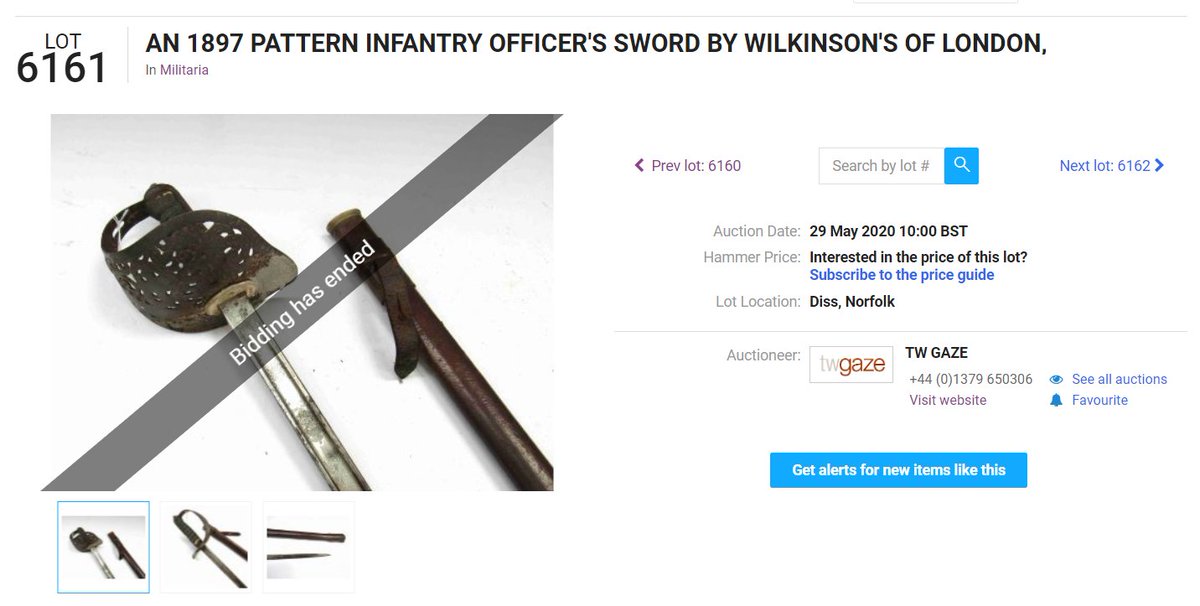

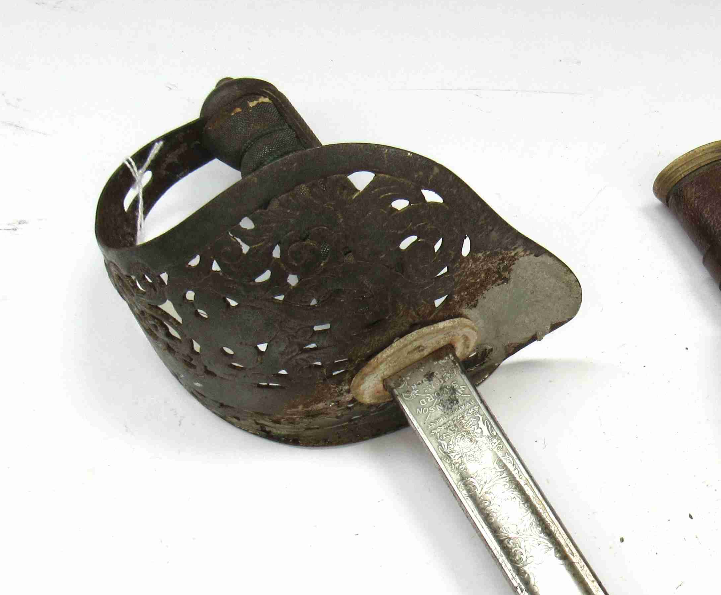
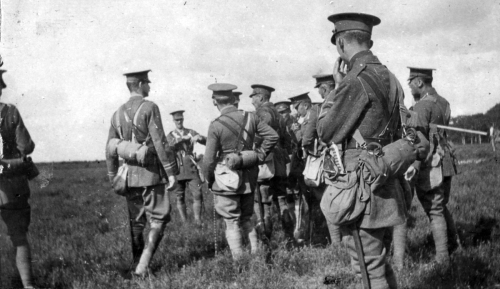
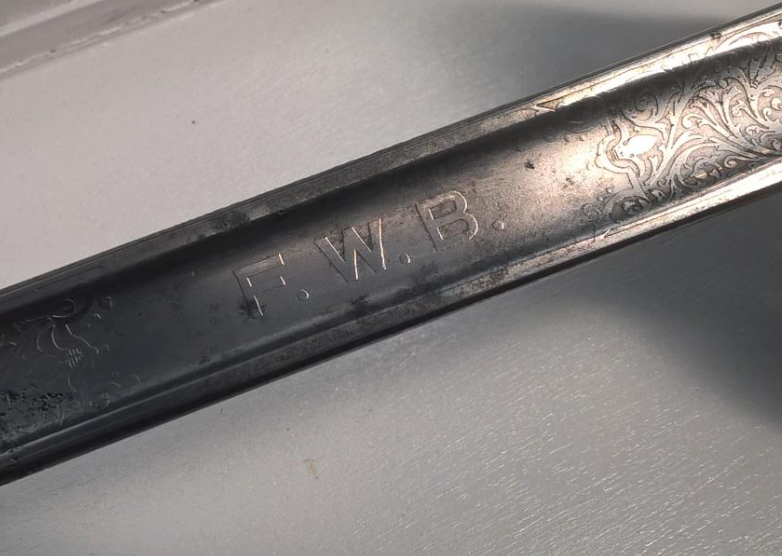
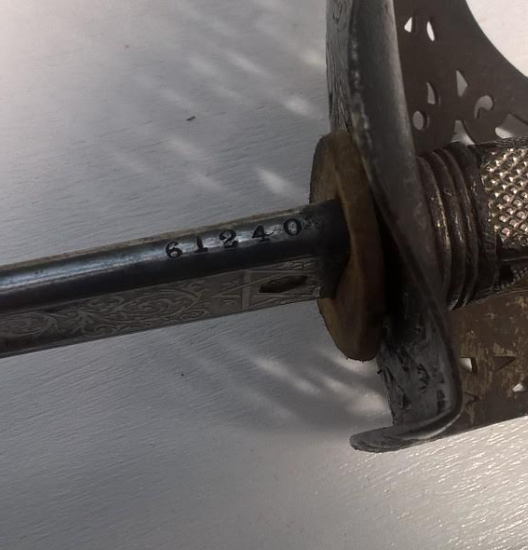


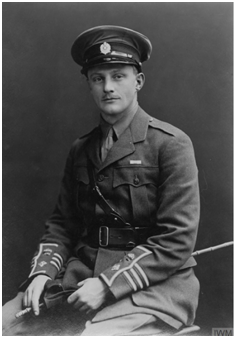
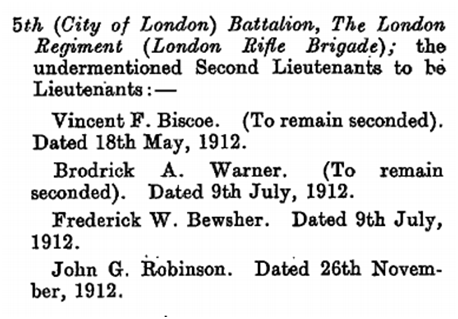
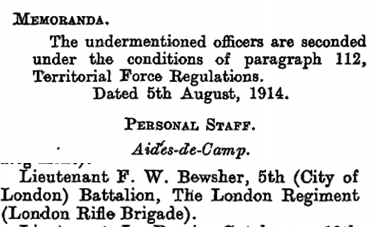
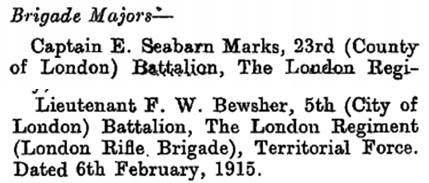


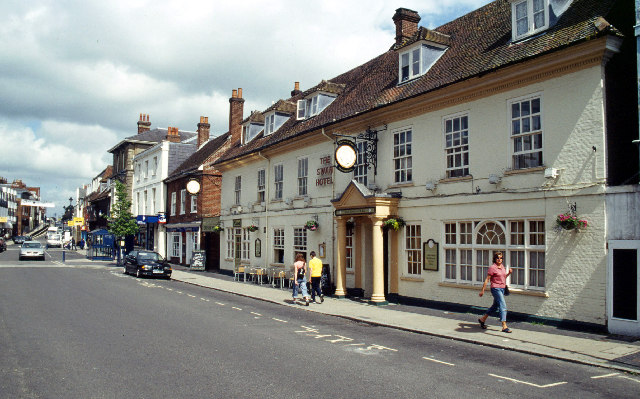
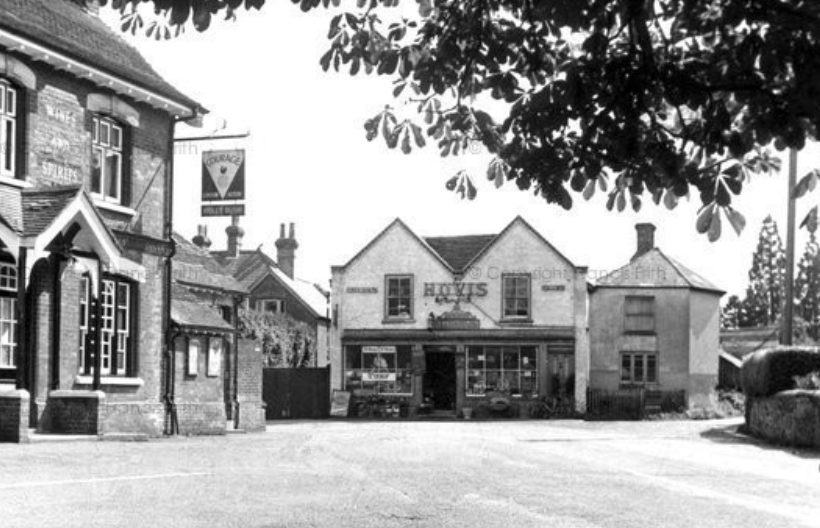
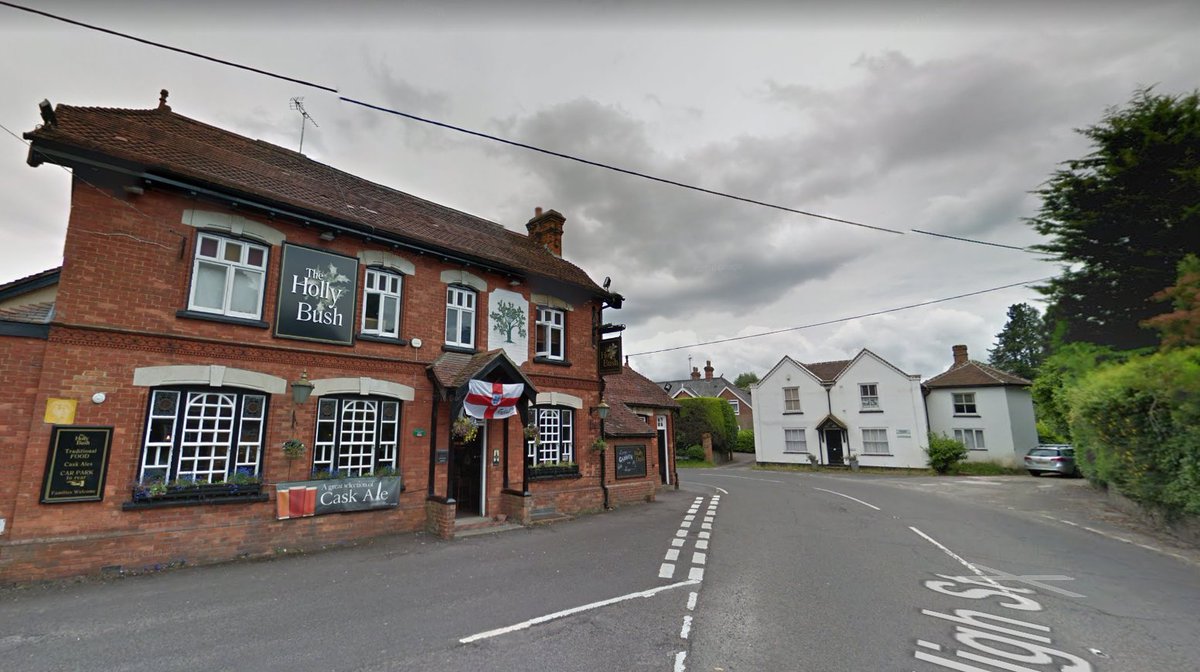 " title="Still there. Across from the Hollybush!Pub. Beer gardens. Beer. Fun..........https://abs.twimg.com/emoji/v2/... draggable="false" alt="😭" title="Laut schreiendes Gesicht" aria-label="Emoji: Laut schreiendes Gesicht">" class="img-responsive" style="max-width:100%;"/>
" title="Still there. Across from the Hollybush!Pub. Beer gardens. Beer. Fun..........https://abs.twimg.com/emoji/v2/... draggable="false" alt="😭" title="Laut schreiendes Gesicht" aria-label="Emoji: Laut schreiendes Gesicht">" class="img-responsive" style="max-width:100%;"/>
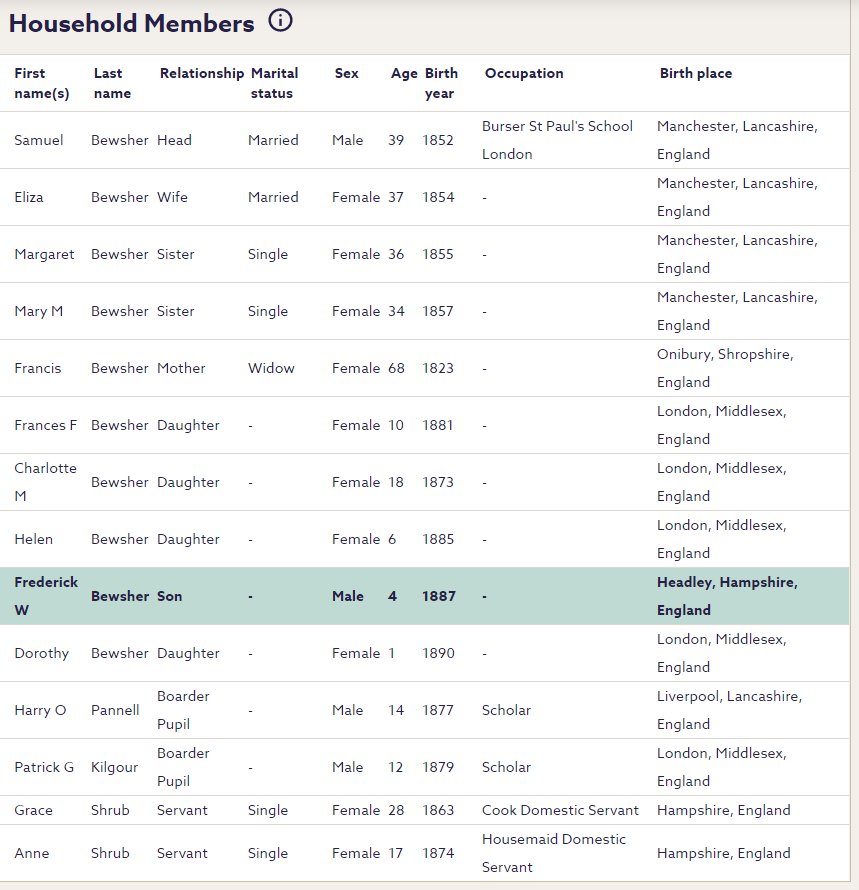

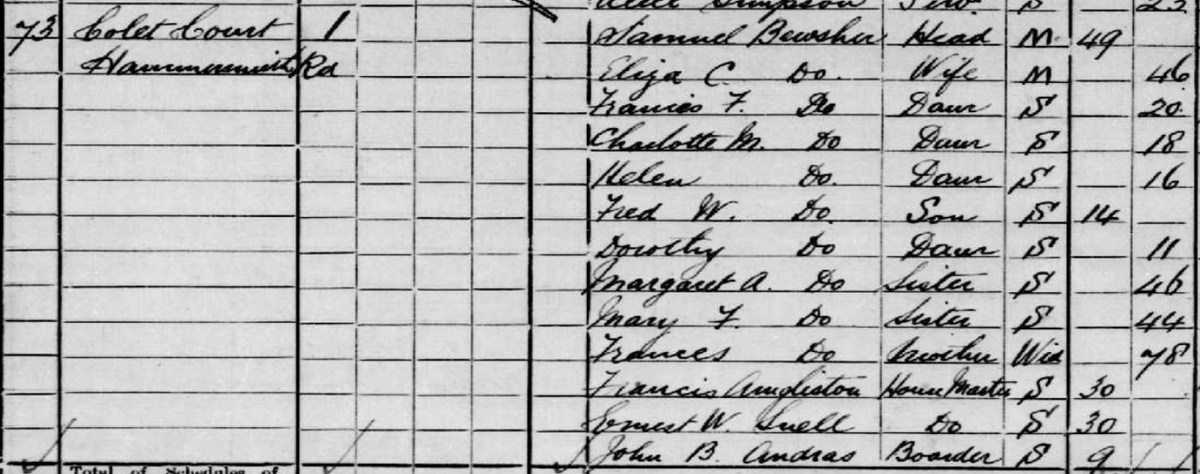

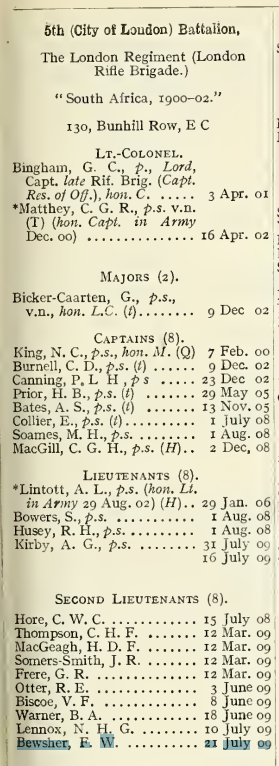

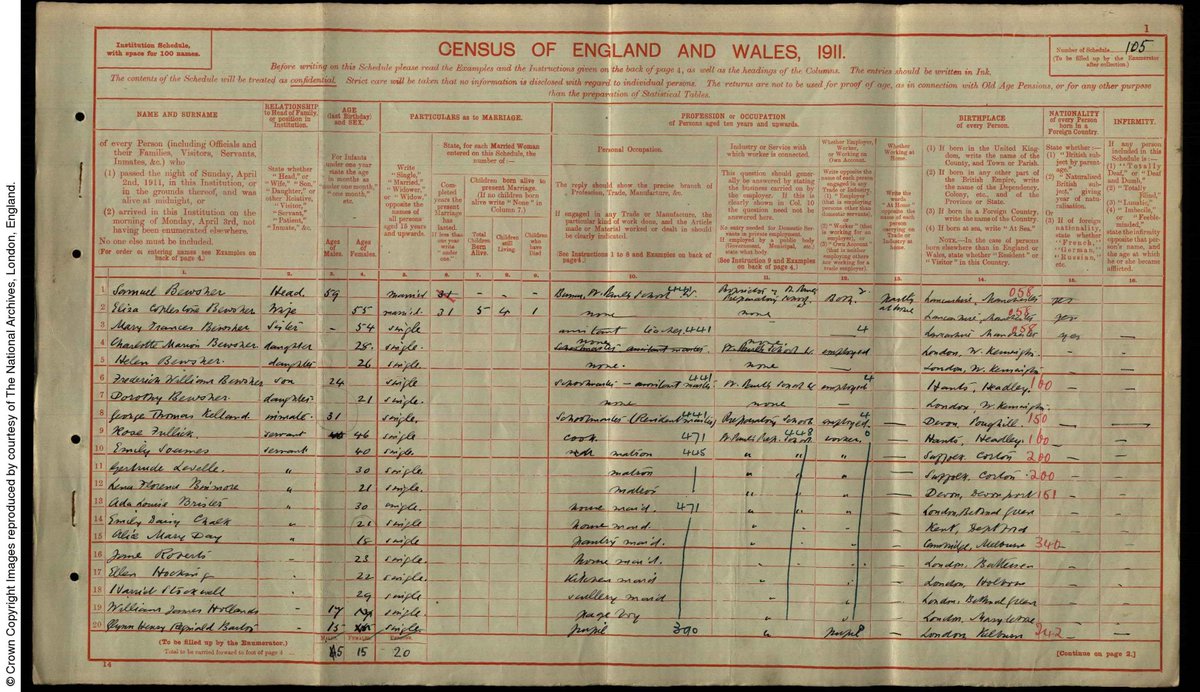

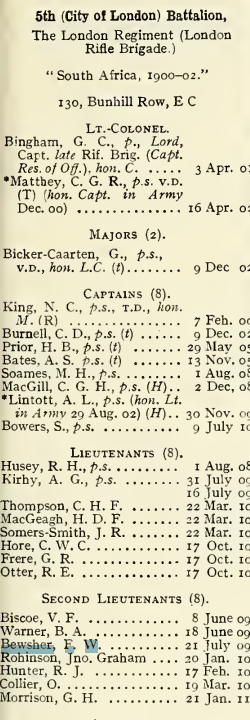


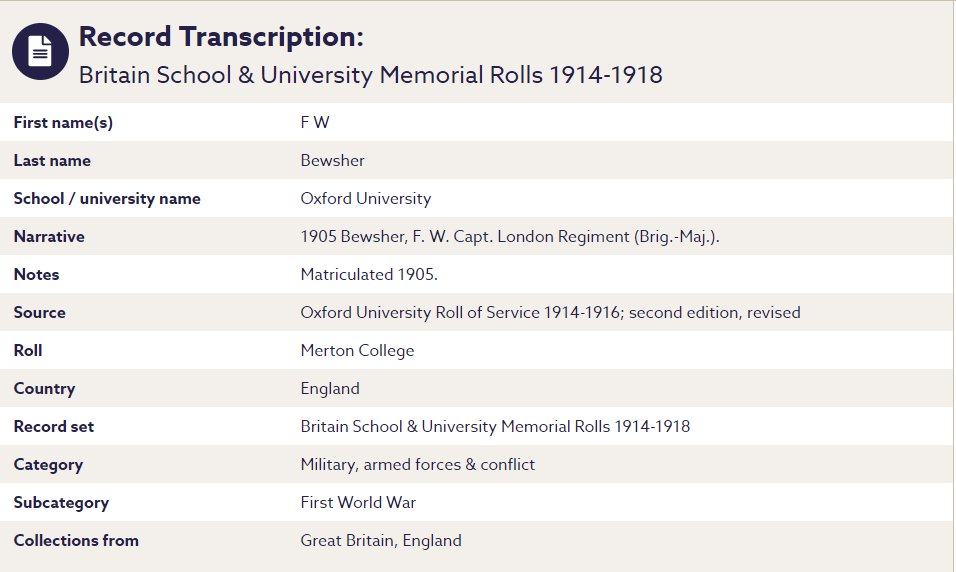
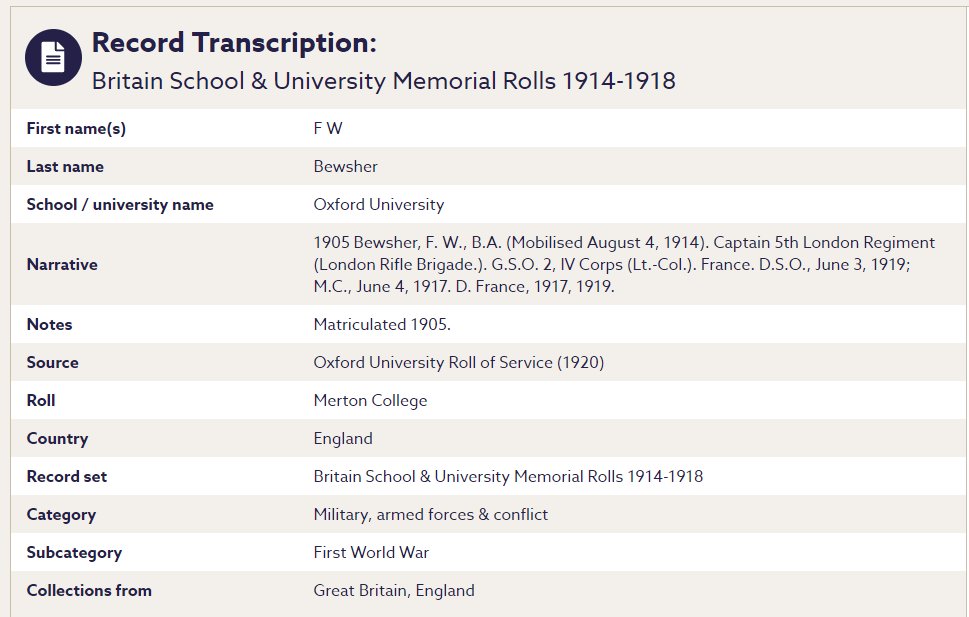




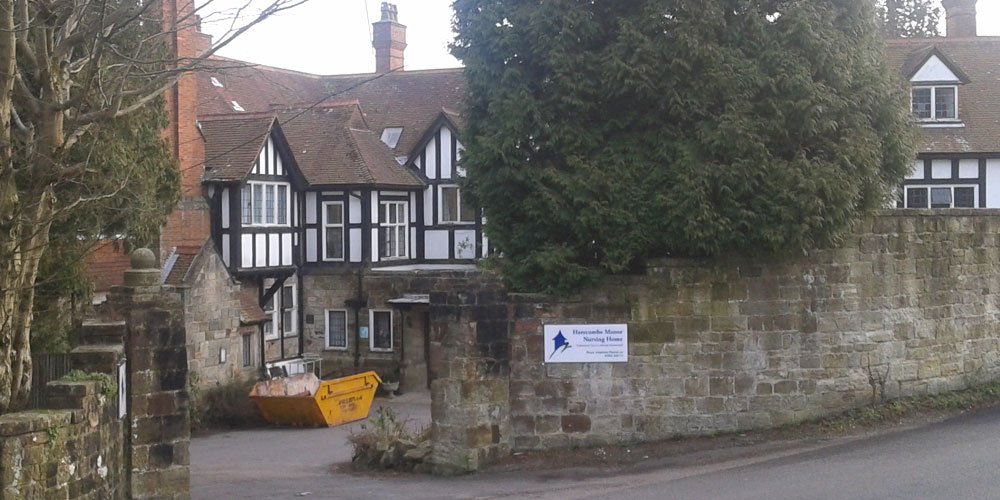
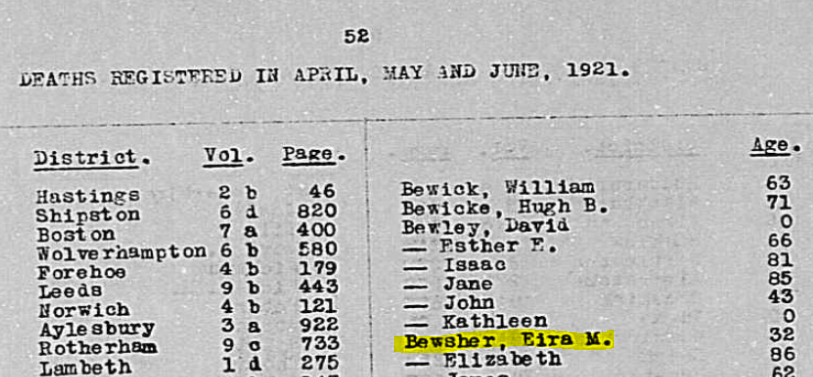
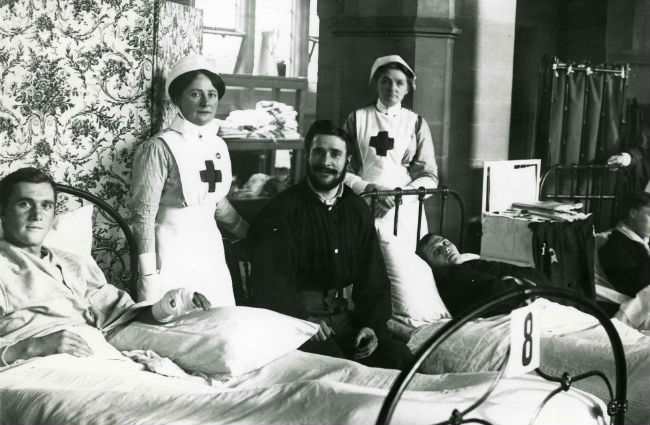 #nurses" title="Don& #39;t know what happened. May find out later. Sadly no pic of Eira so far either. A small reminder of her work.And a nice page on the evolution of nursing uniforms during WW1: https://www.scarletfinders.co.uk/157.html&... href="https://twtext.com//hashtag/nurses"> #nurses">
#nurses" title="Don& #39;t know what happened. May find out later. Sadly no pic of Eira so far either. A small reminder of her work.And a nice page on the evolution of nursing uniforms during WW1: https://www.scarletfinders.co.uk/157.html&... href="https://twtext.com//hashtag/nurses"> #nurses">
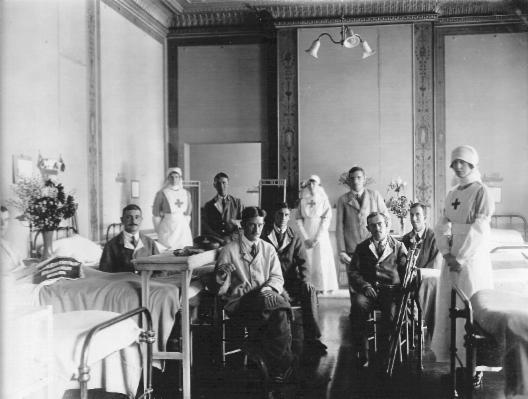 #nurses" title="Don& #39;t know what happened. May find out later. Sadly no pic of Eira so far either. A small reminder of her work.And a nice page on the evolution of nursing uniforms during WW1: https://www.scarletfinders.co.uk/157.html&... href="https://twtext.com//hashtag/nurses"> #nurses">
#nurses" title="Don& #39;t know what happened. May find out later. Sadly no pic of Eira so far either. A small reminder of her work.And a nice page on the evolution of nursing uniforms during WW1: https://www.scarletfinders.co.uk/157.html&... href="https://twtext.com//hashtag/nurses"> #nurses">
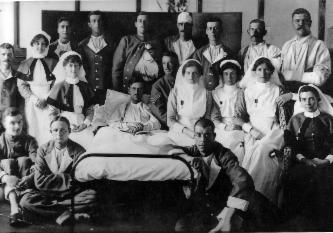 #nurses" title="Don& #39;t know what happened. May find out later. Sadly no pic of Eira so far either. A small reminder of her work.And a nice page on the evolution of nursing uniforms during WW1: https://www.scarletfinders.co.uk/157.html&... href="https://twtext.com//hashtag/nurses"> #nurses">
#nurses" title="Don& #39;t know what happened. May find out later. Sadly no pic of Eira so far either. A small reminder of her work.And a nice page on the evolution of nursing uniforms during WW1: https://www.scarletfinders.co.uk/157.html&... href="https://twtext.com//hashtag/nurses"> #nurses">
 #inflation" title="Fred was up before the beak in 1907 for cycling around at 11.30pm without lights! Fined 8s 6d. Which is in todays money. Hang on.......Wow! You could get a plumber round for £33!Calculator is at the National archives :) https://www.nationalarchives.gov.uk/currency-... href="https://twtext.com//hashtag/inflation"> #inflation">
#inflation" title="Fred was up before the beak in 1907 for cycling around at 11.30pm without lights! Fined 8s 6d. Which is in todays money. Hang on.......Wow! You could get a plumber round for £33!Calculator is at the National archives :) https://www.nationalarchives.gov.uk/currency-... href="https://twtext.com//hashtag/inflation"> #inflation">
 #inflation" title="Fred was up before the beak in 1907 for cycling around at 11.30pm without lights! Fined 8s 6d. Which is in todays money. Hang on.......Wow! You could get a plumber round for £33!Calculator is at the National archives :) https://www.nationalarchives.gov.uk/currency-... href="https://twtext.com//hashtag/inflation"> #inflation">
#inflation" title="Fred was up before the beak in 1907 for cycling around at 11.30pm without lights! Fined 8s 6d. Which is in todays money. Hang on.......Wow! You could get a plumber round for £33!Calculator is at the National archives :) https://www.nationalarchives.gov.uk/currency-... href="https://twtext.com//hashtag/inflation"> #inflation">
